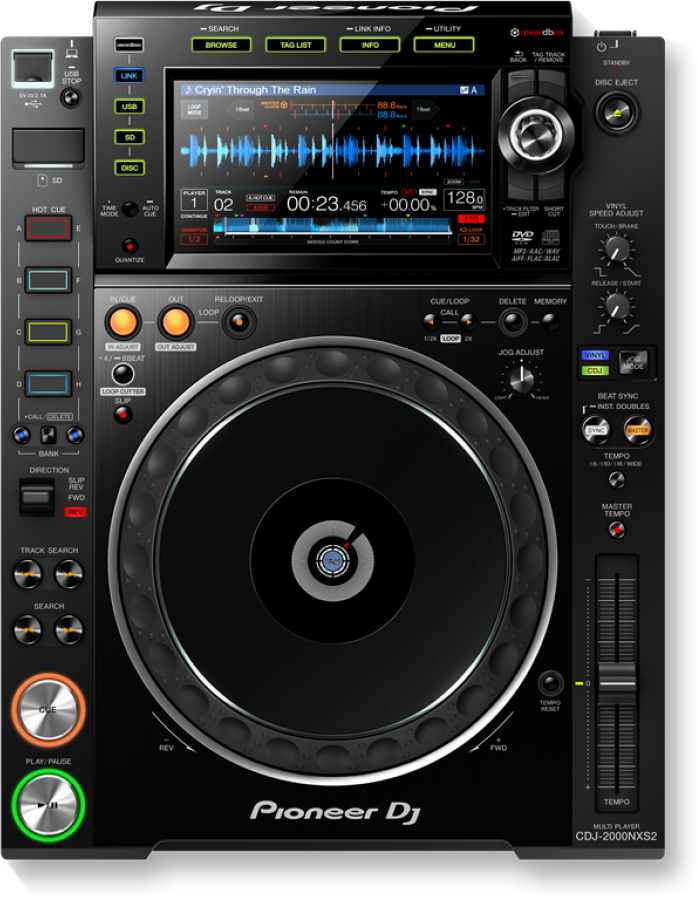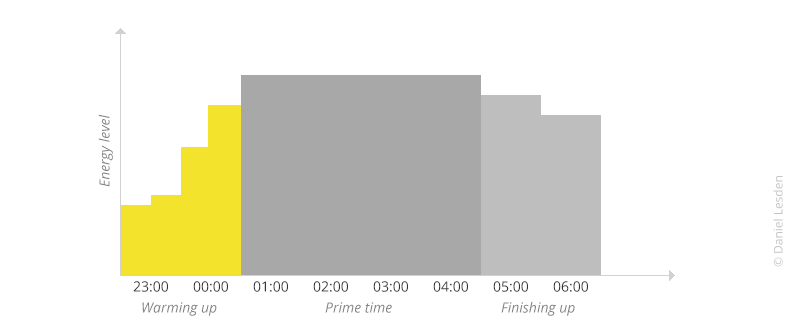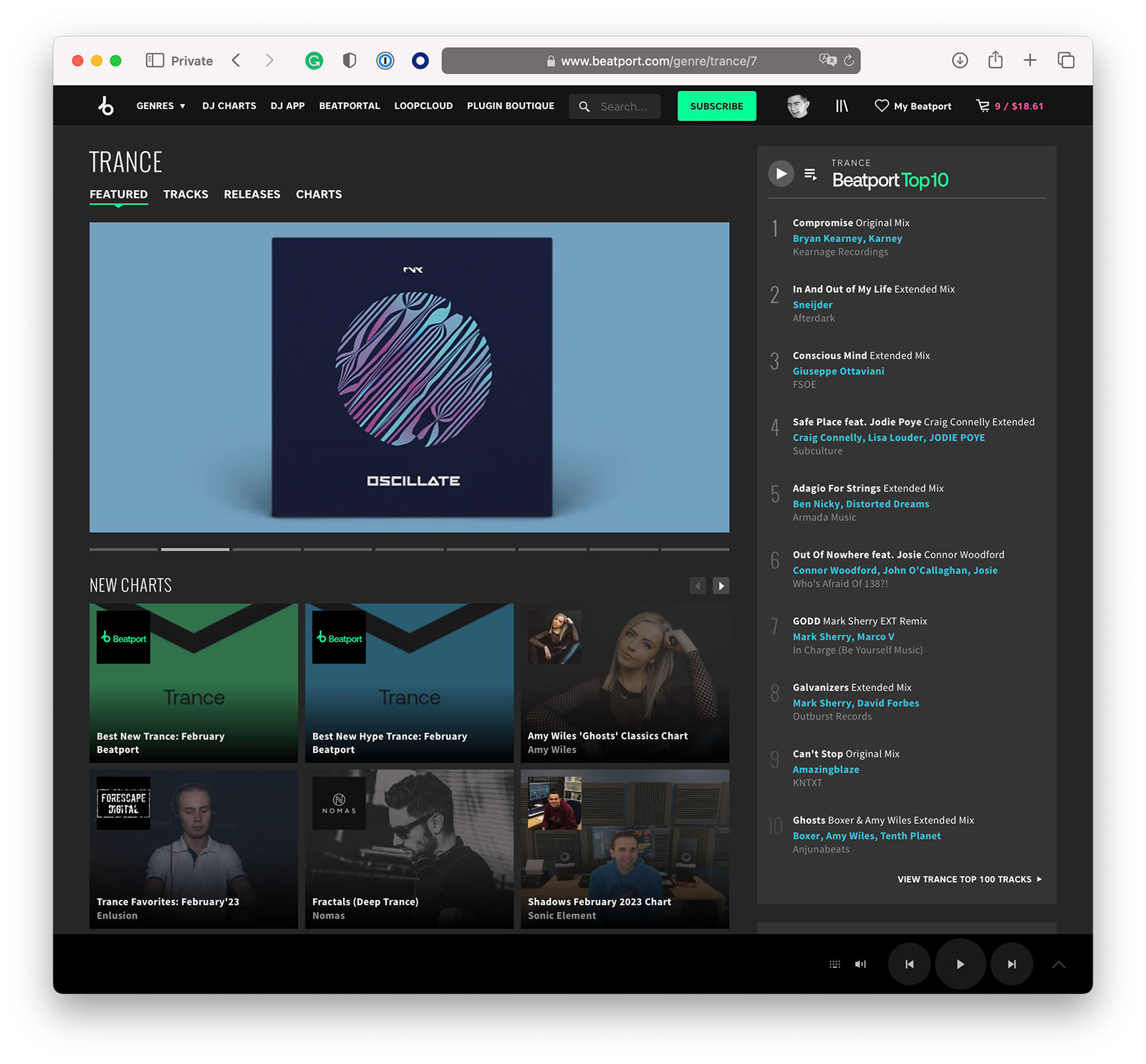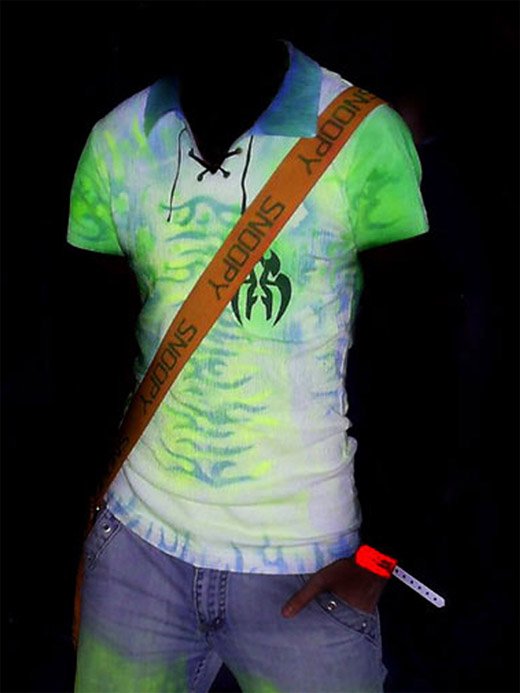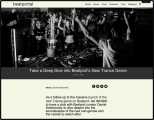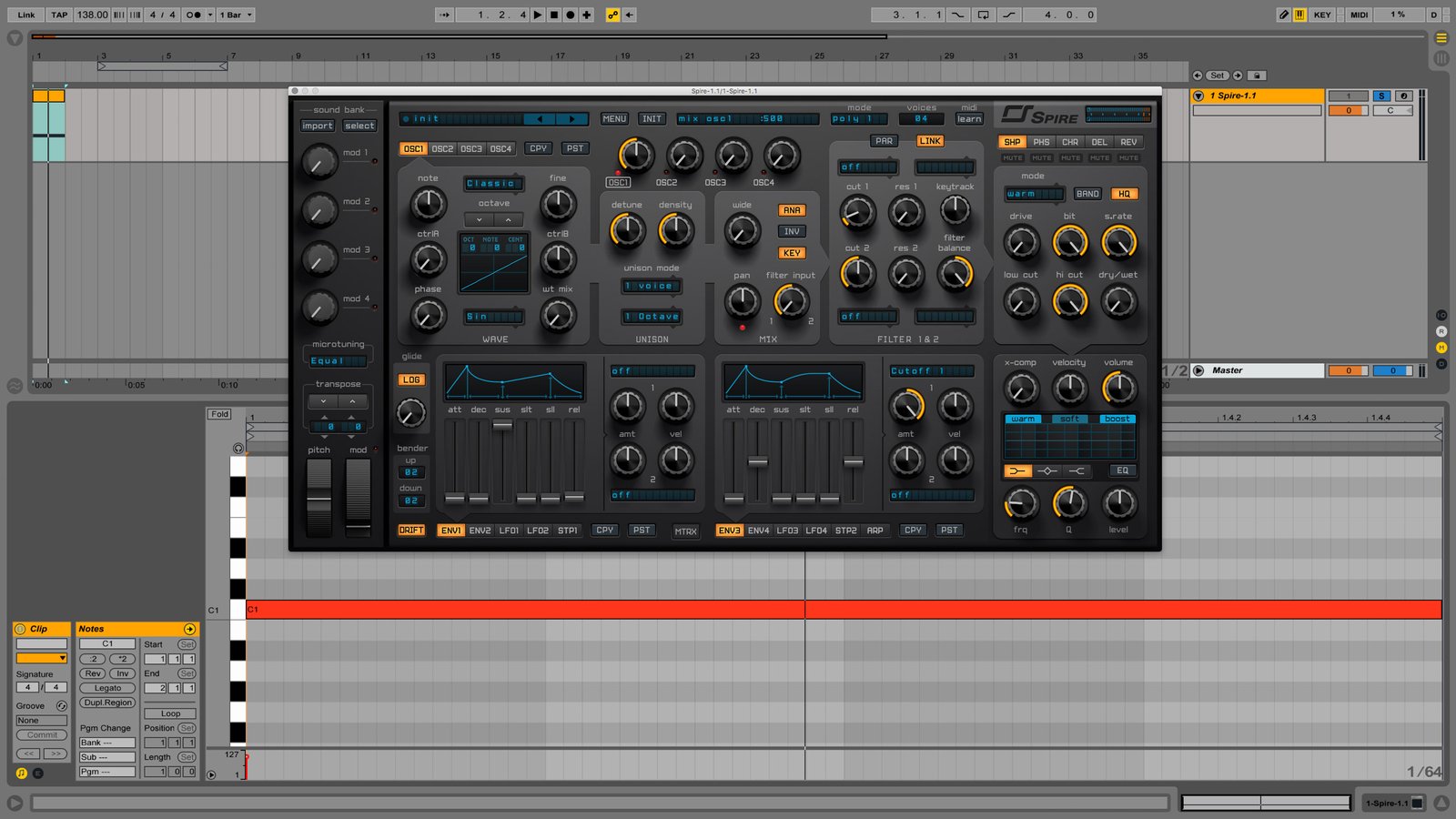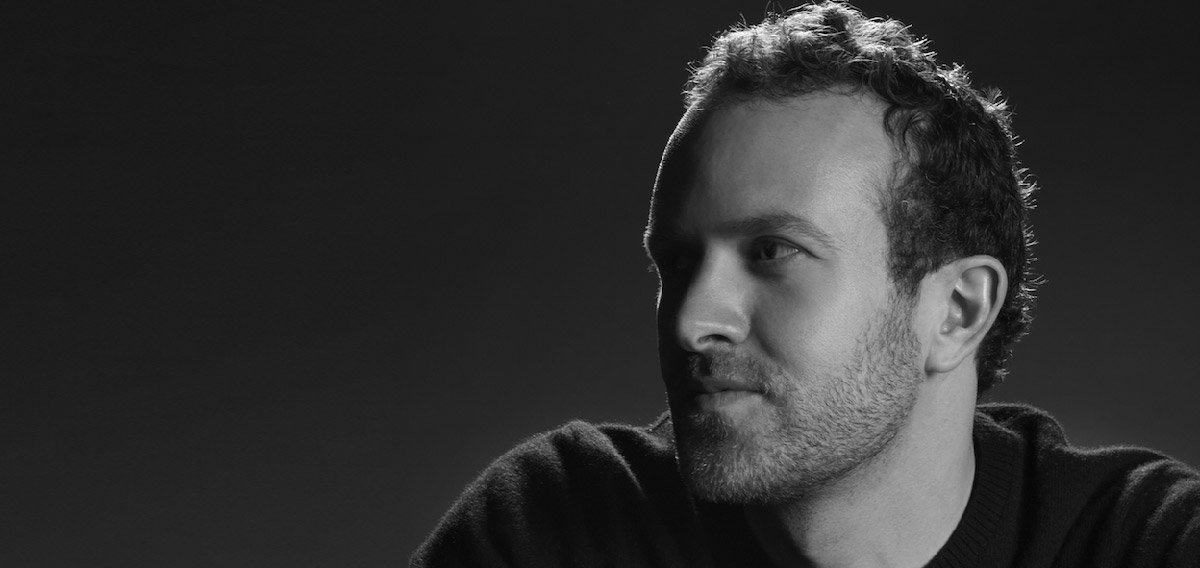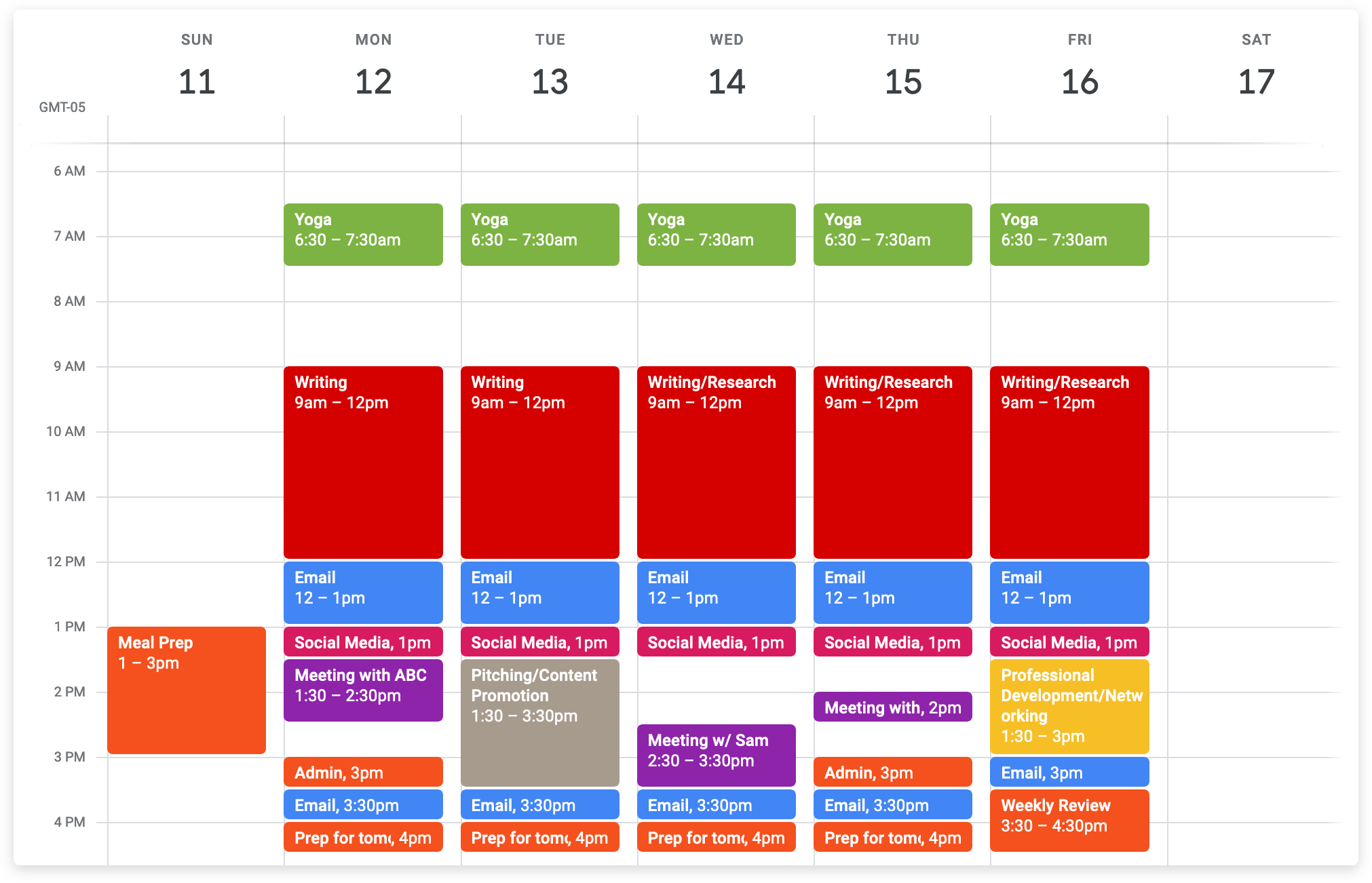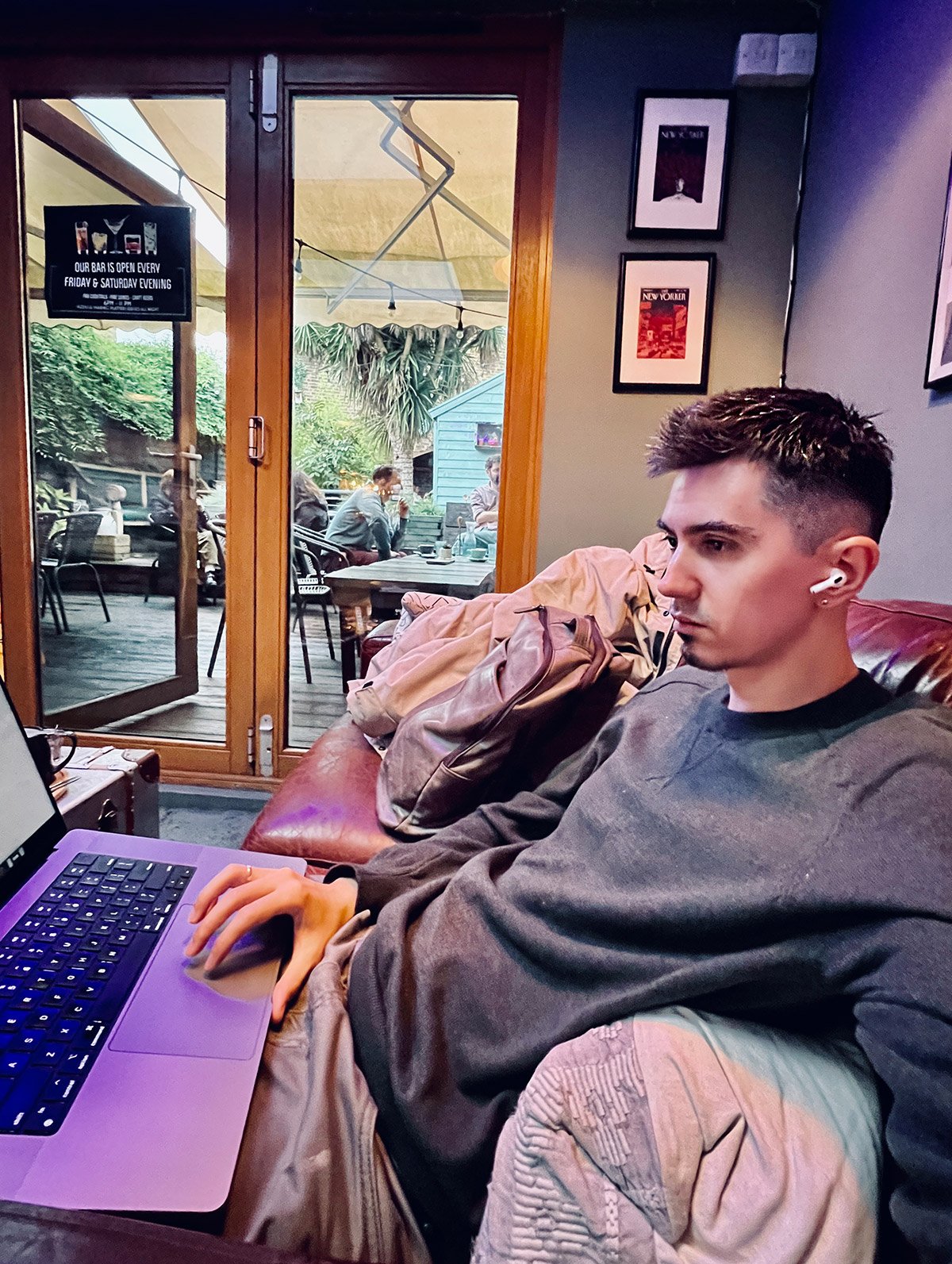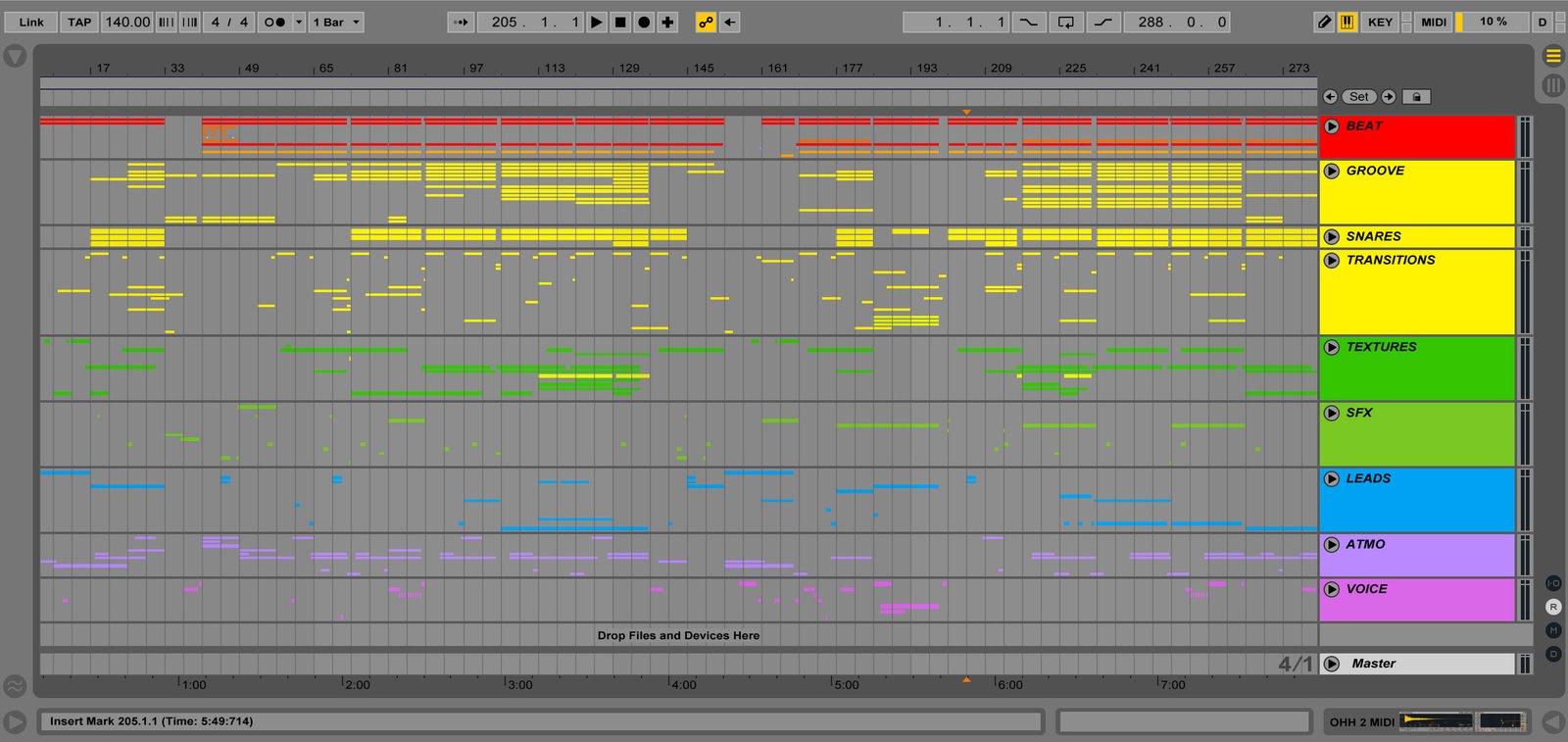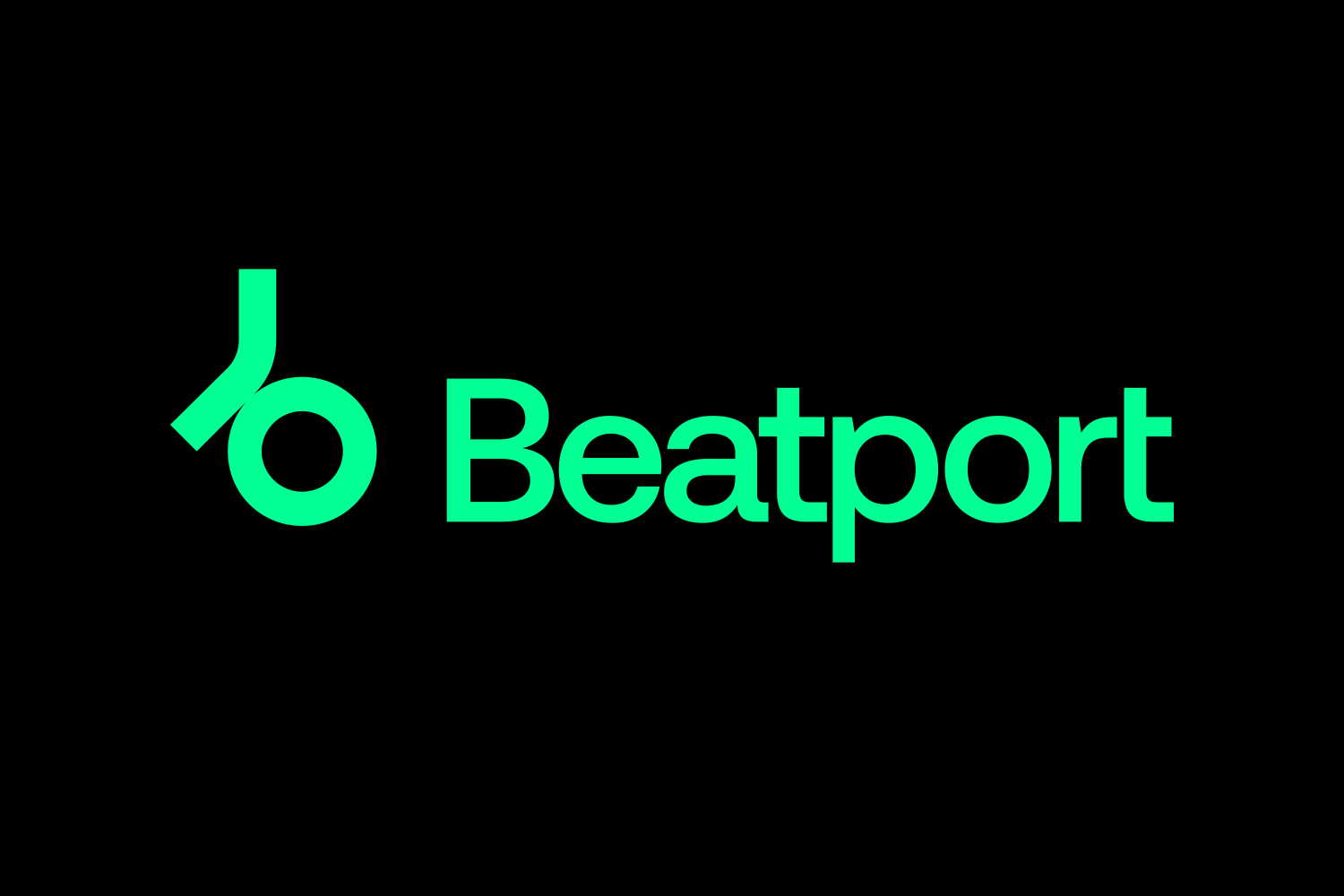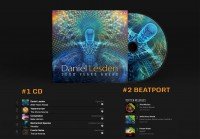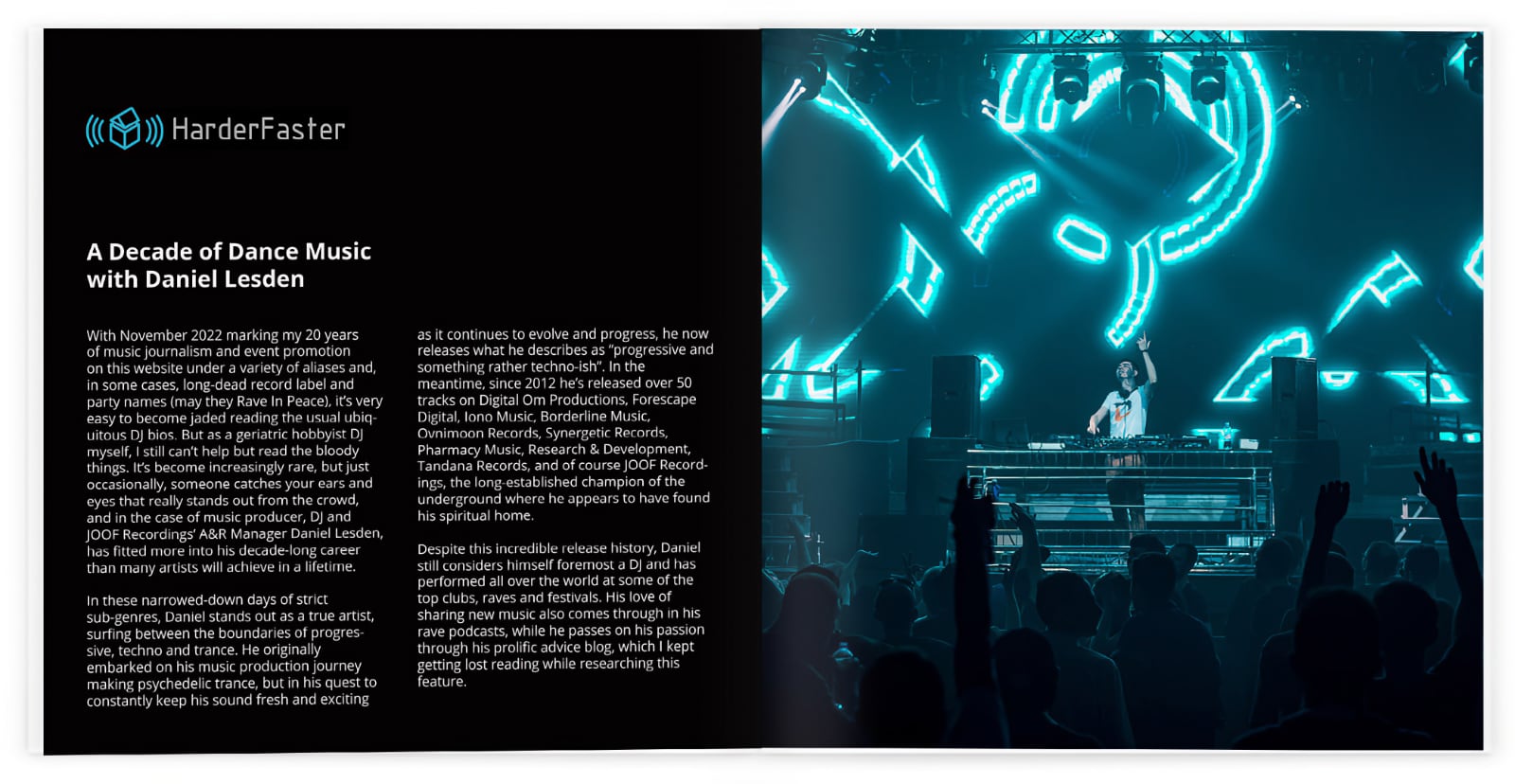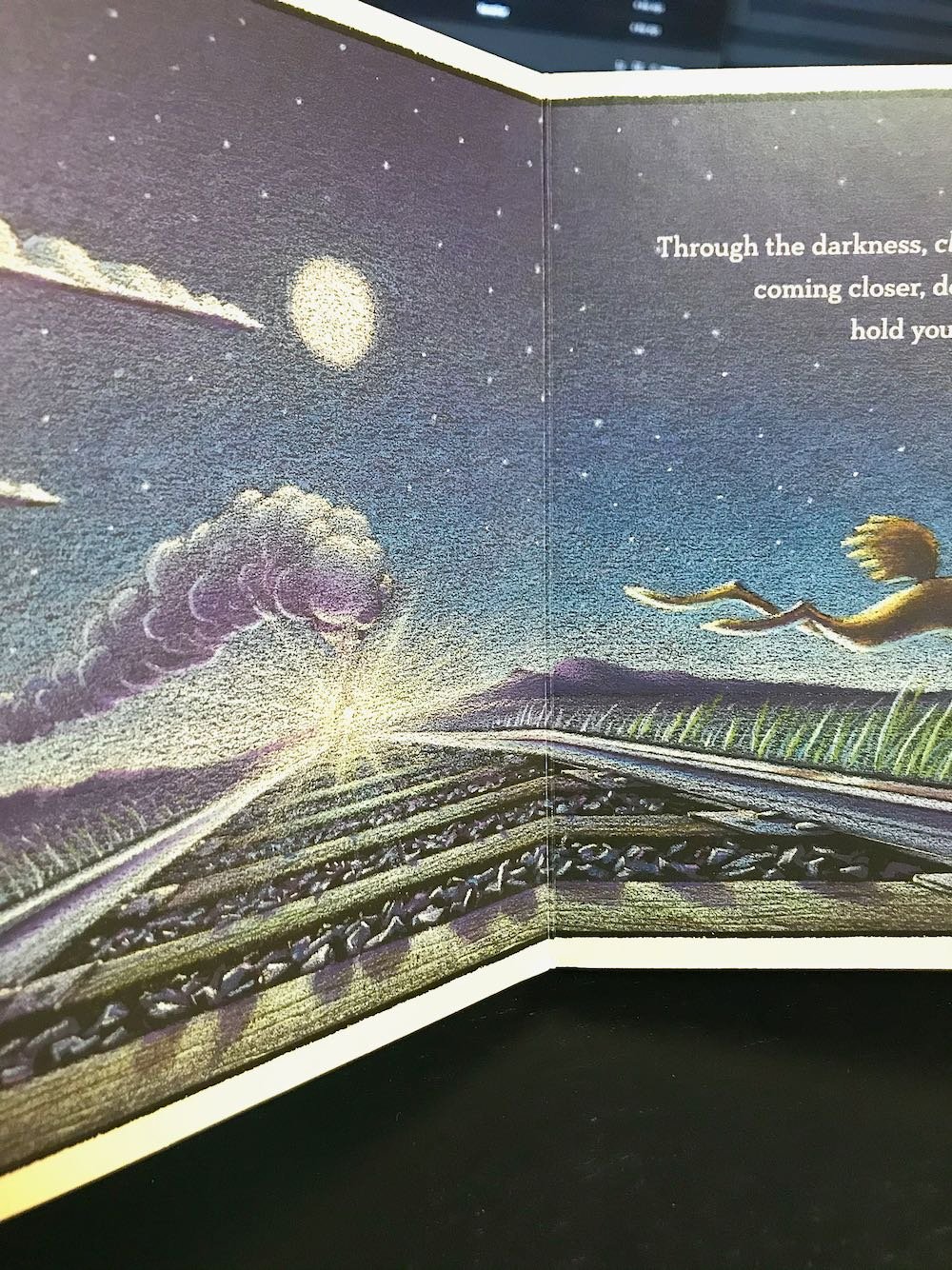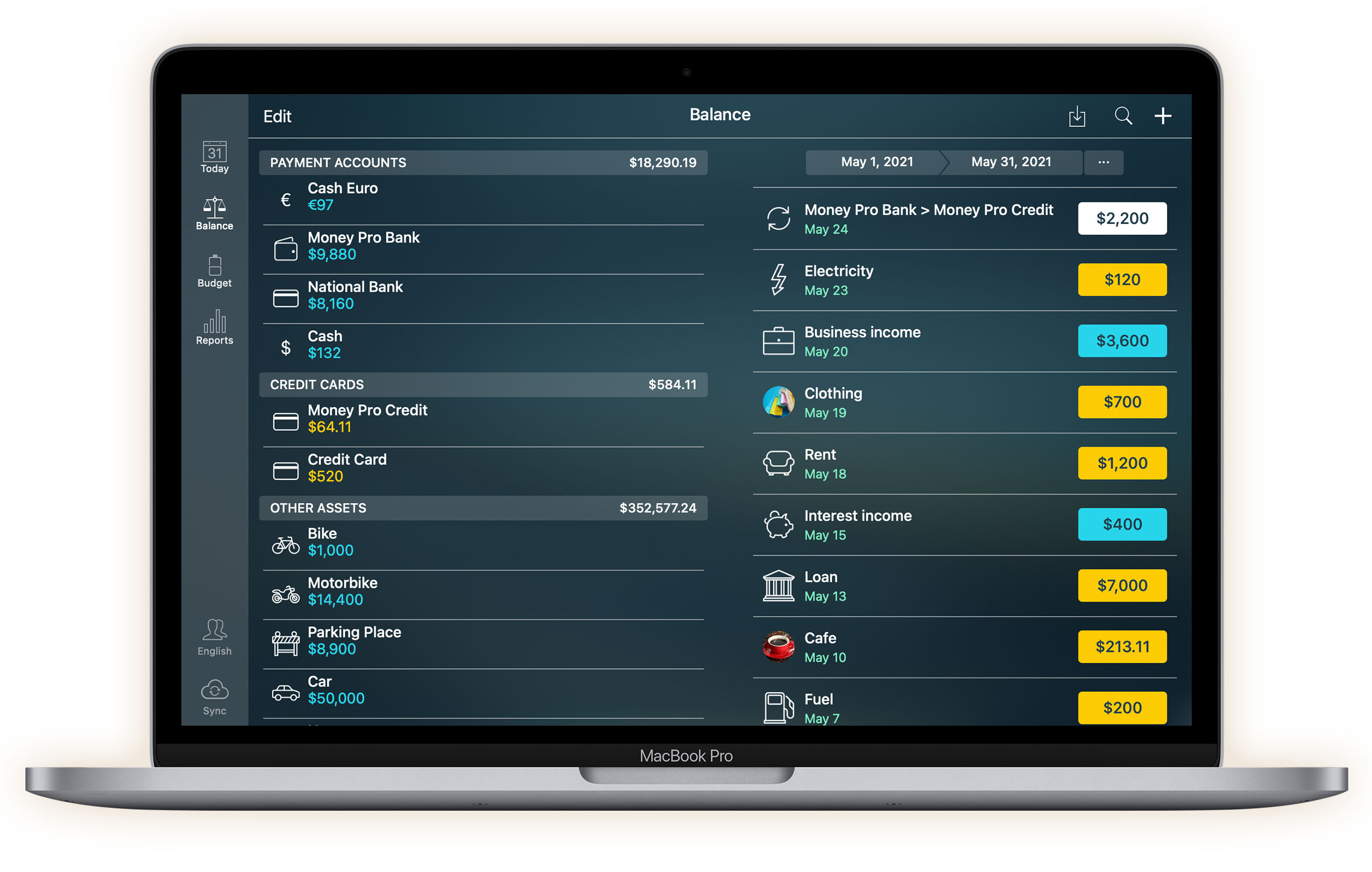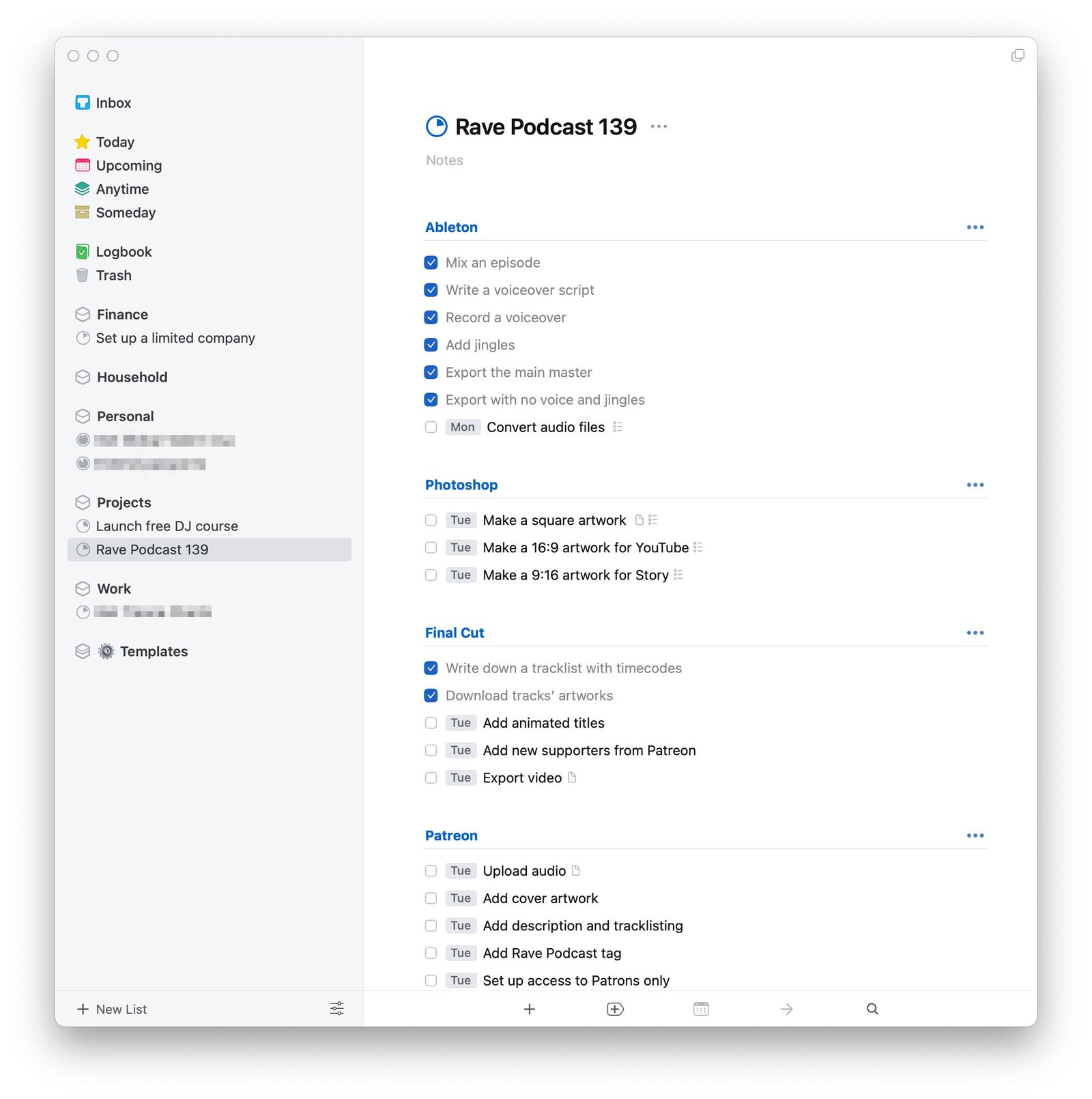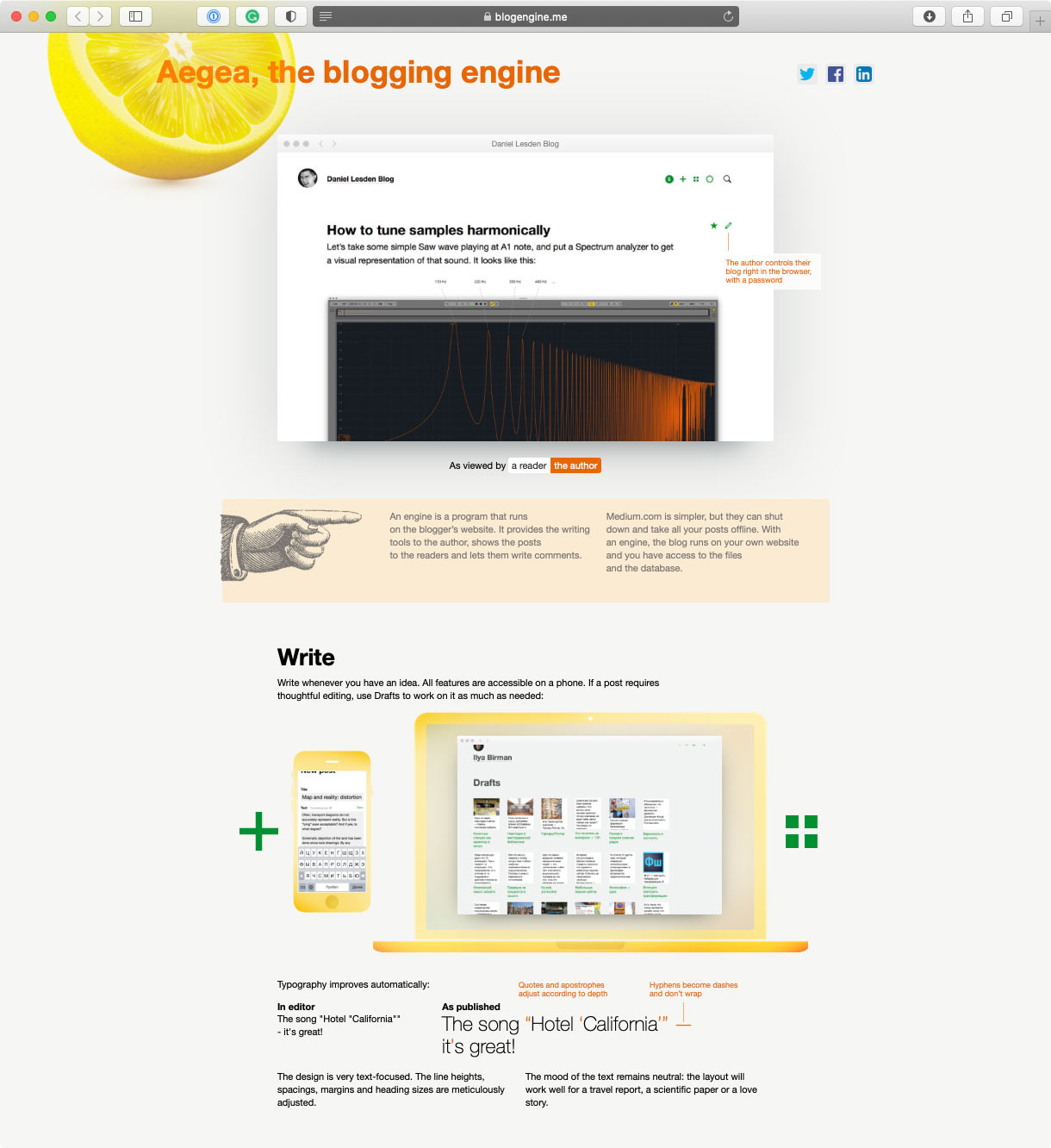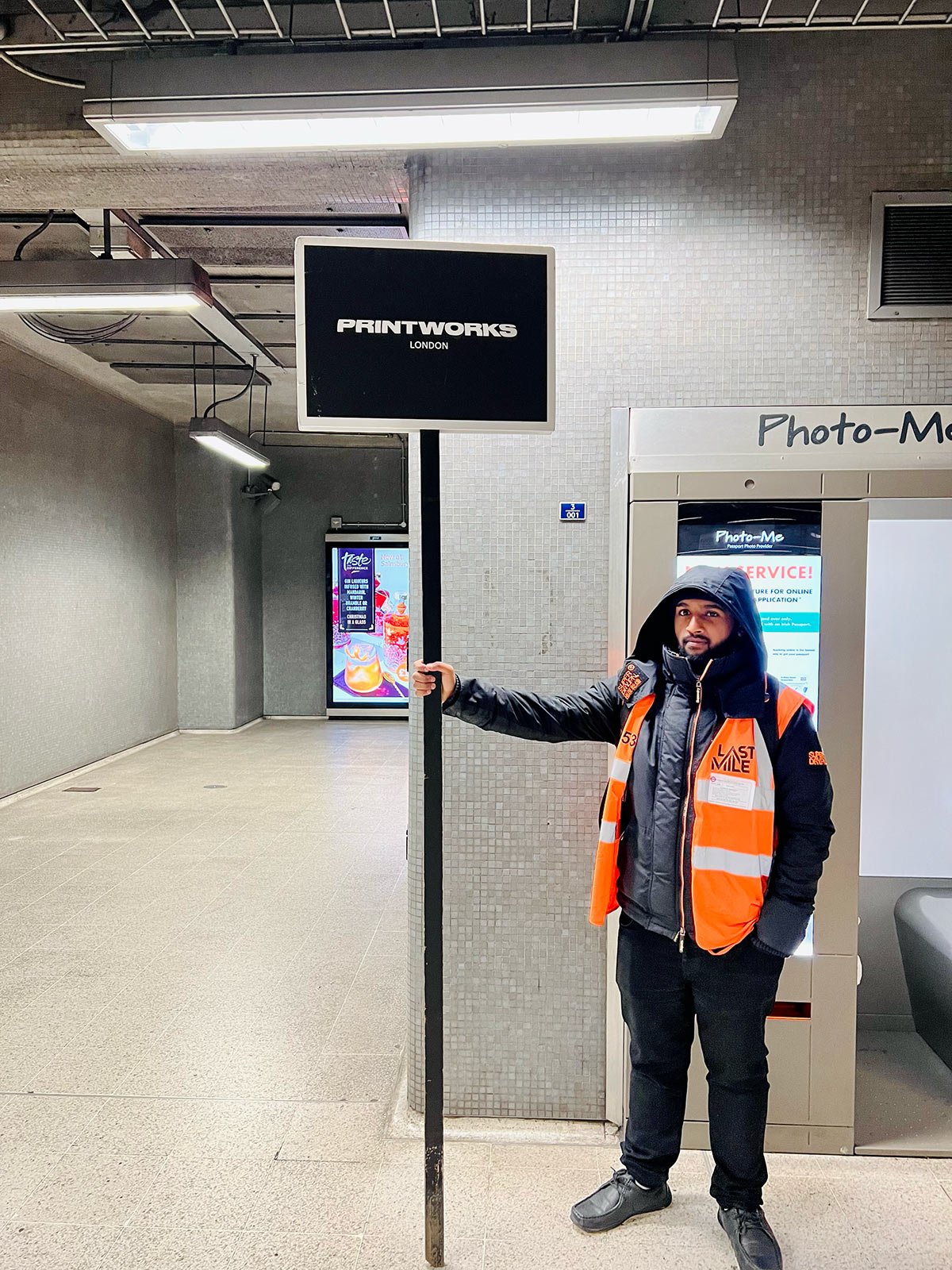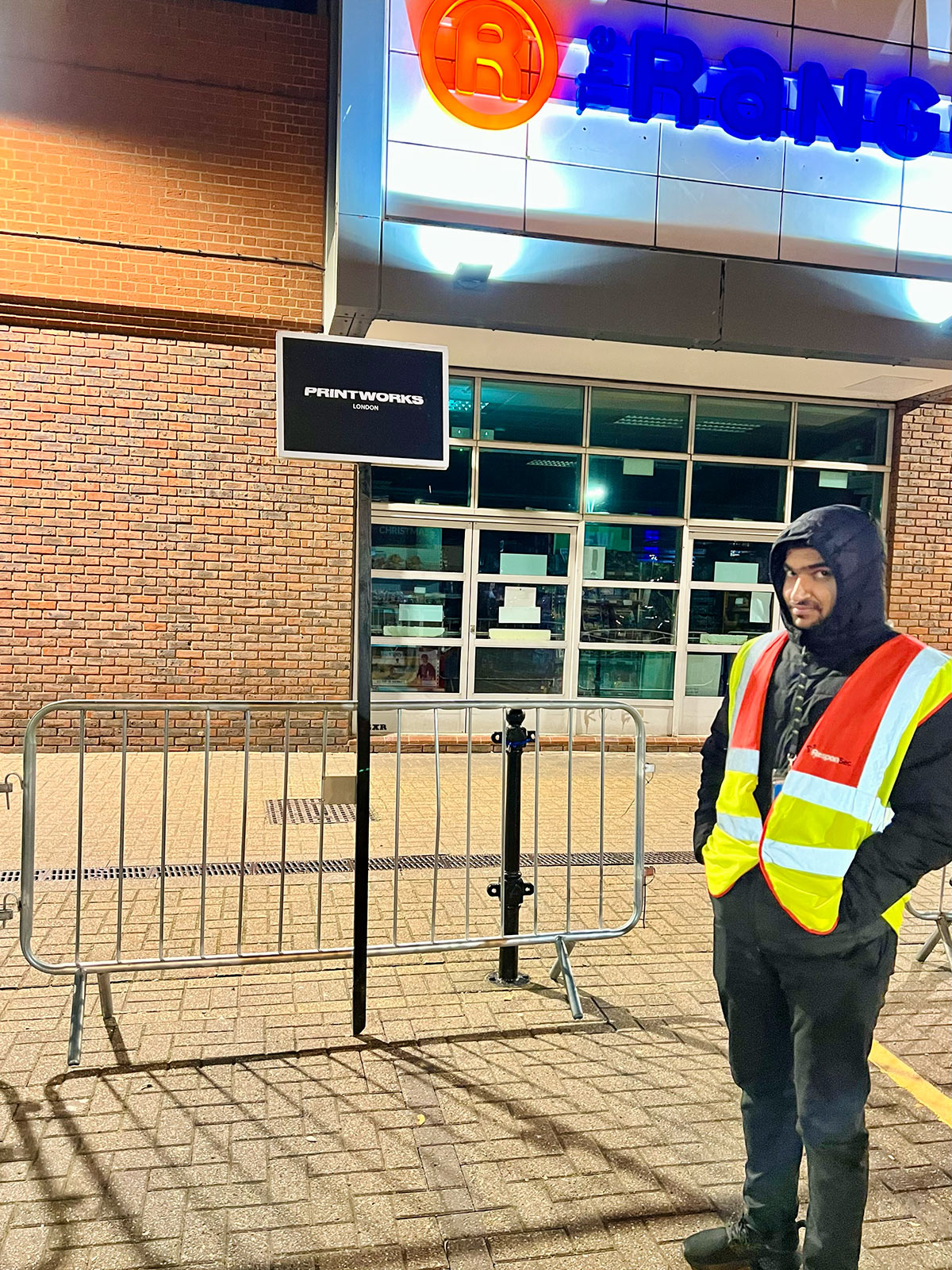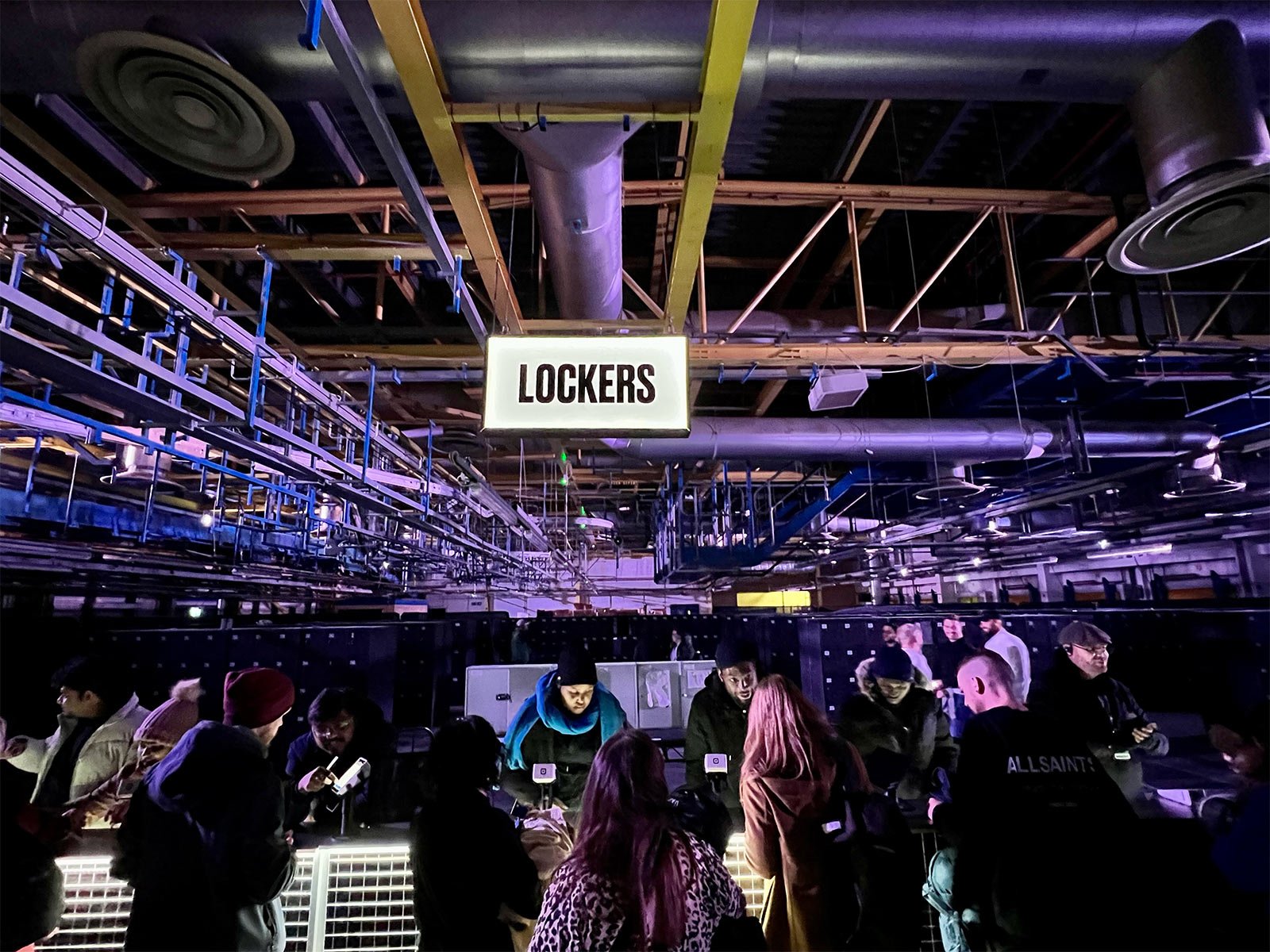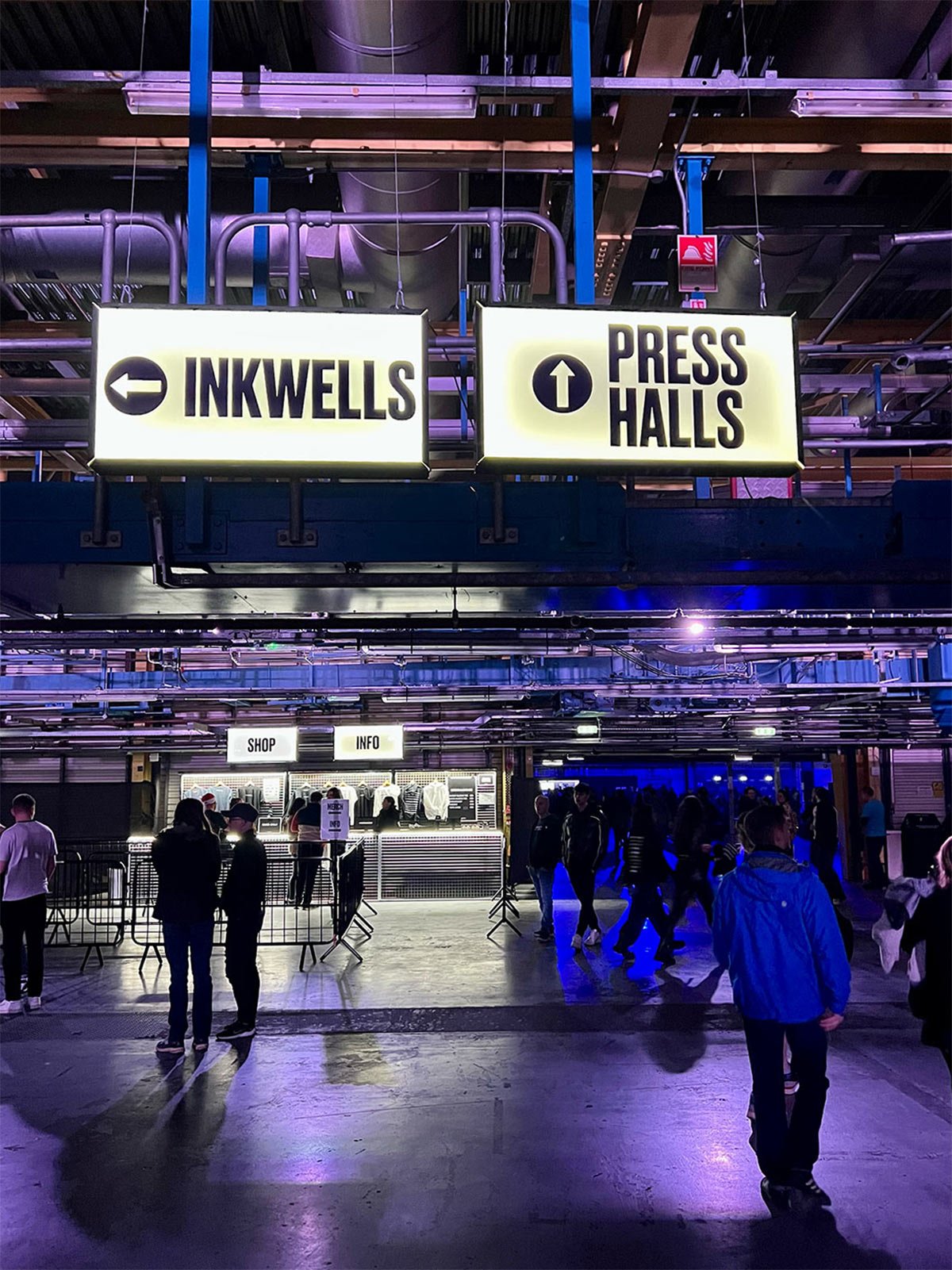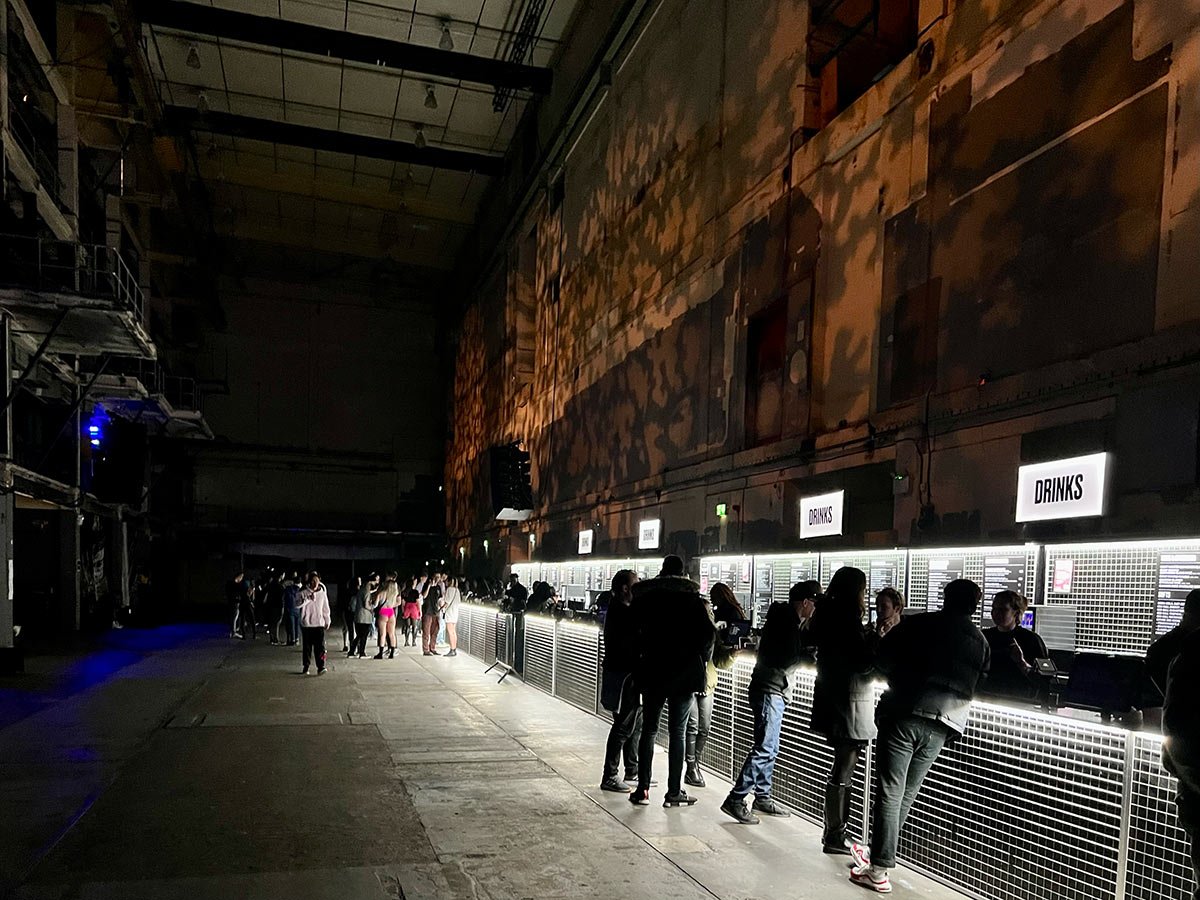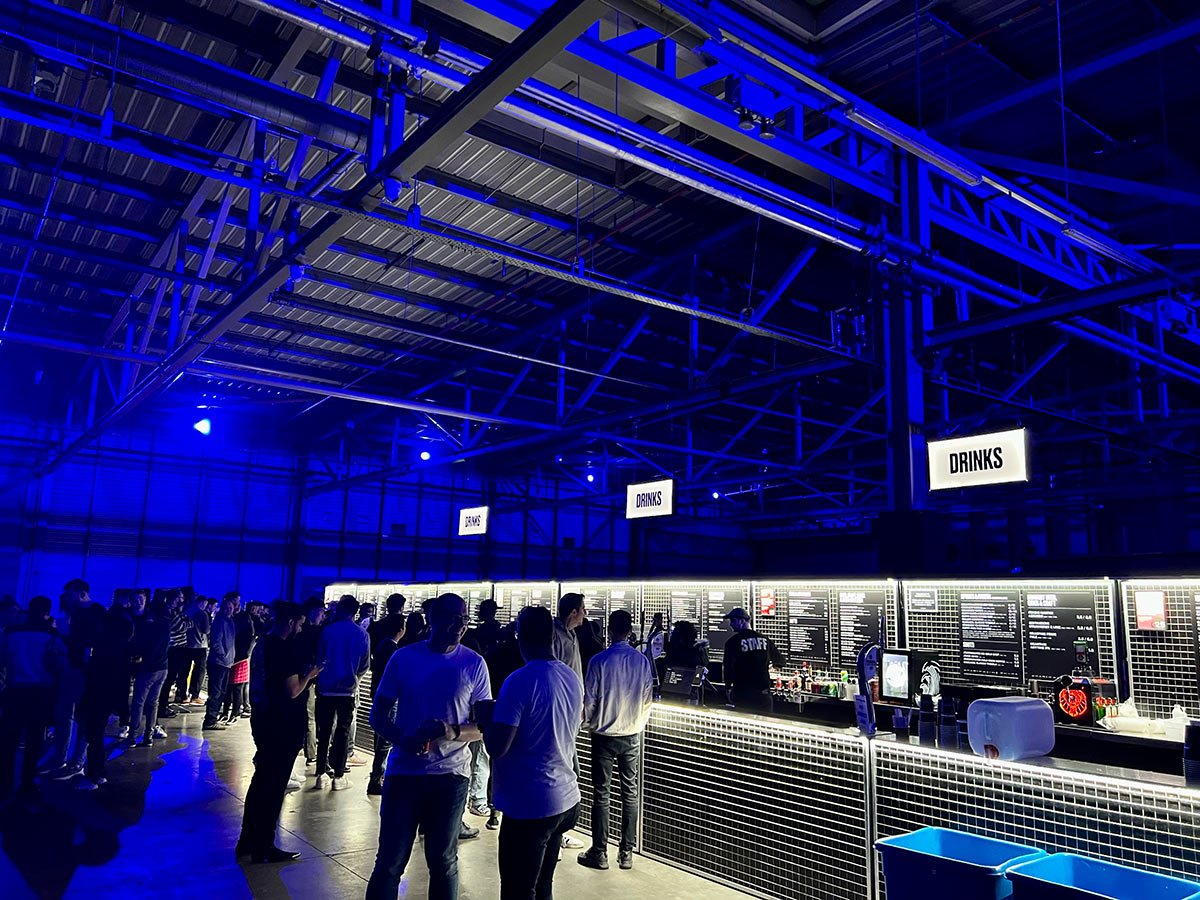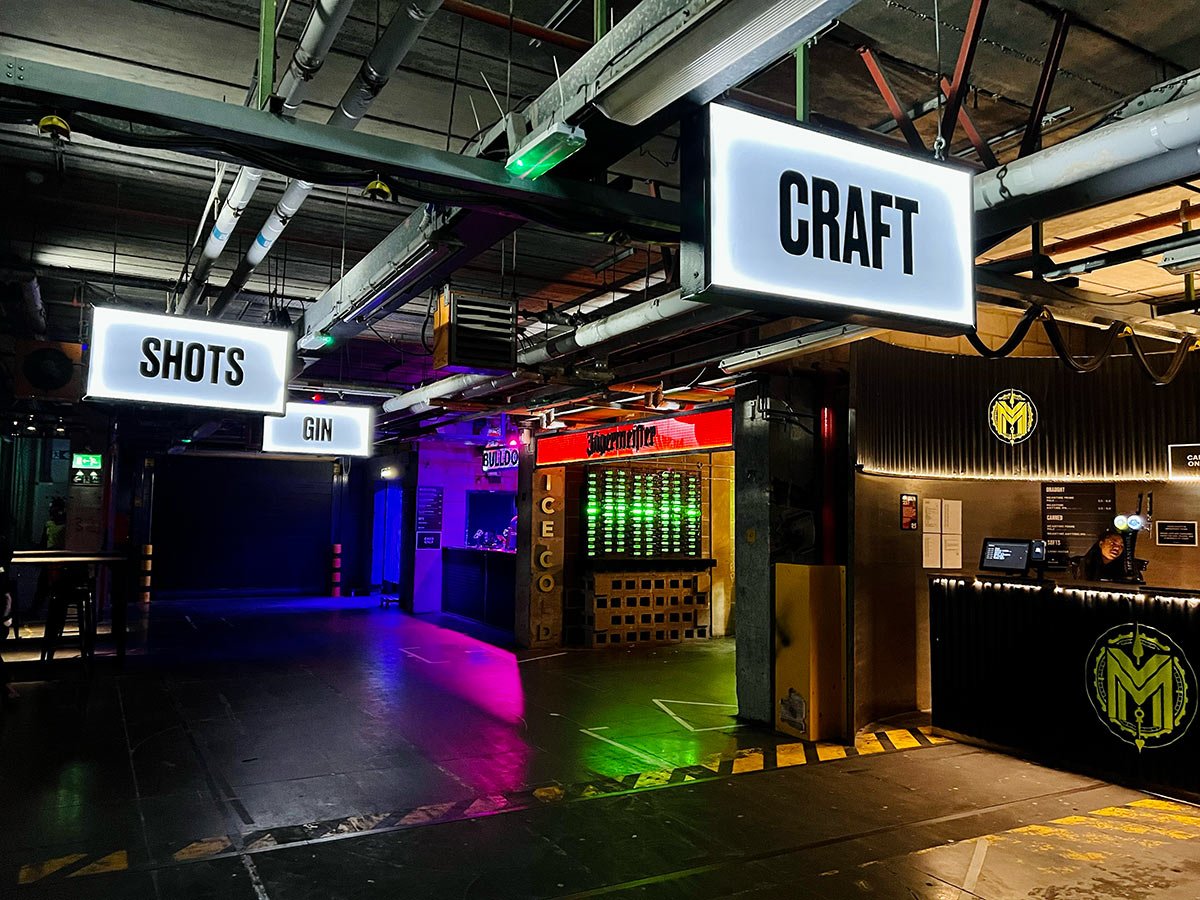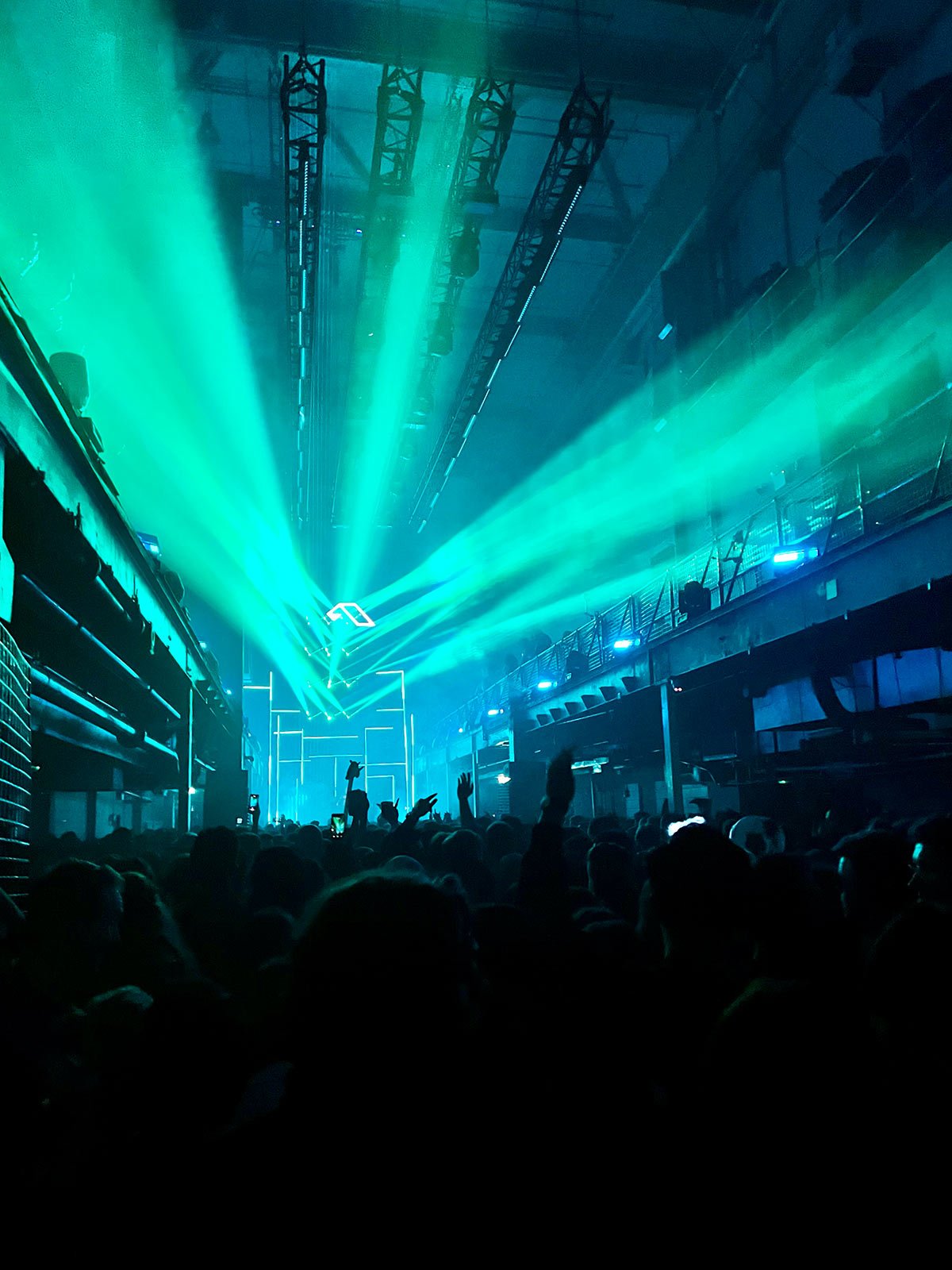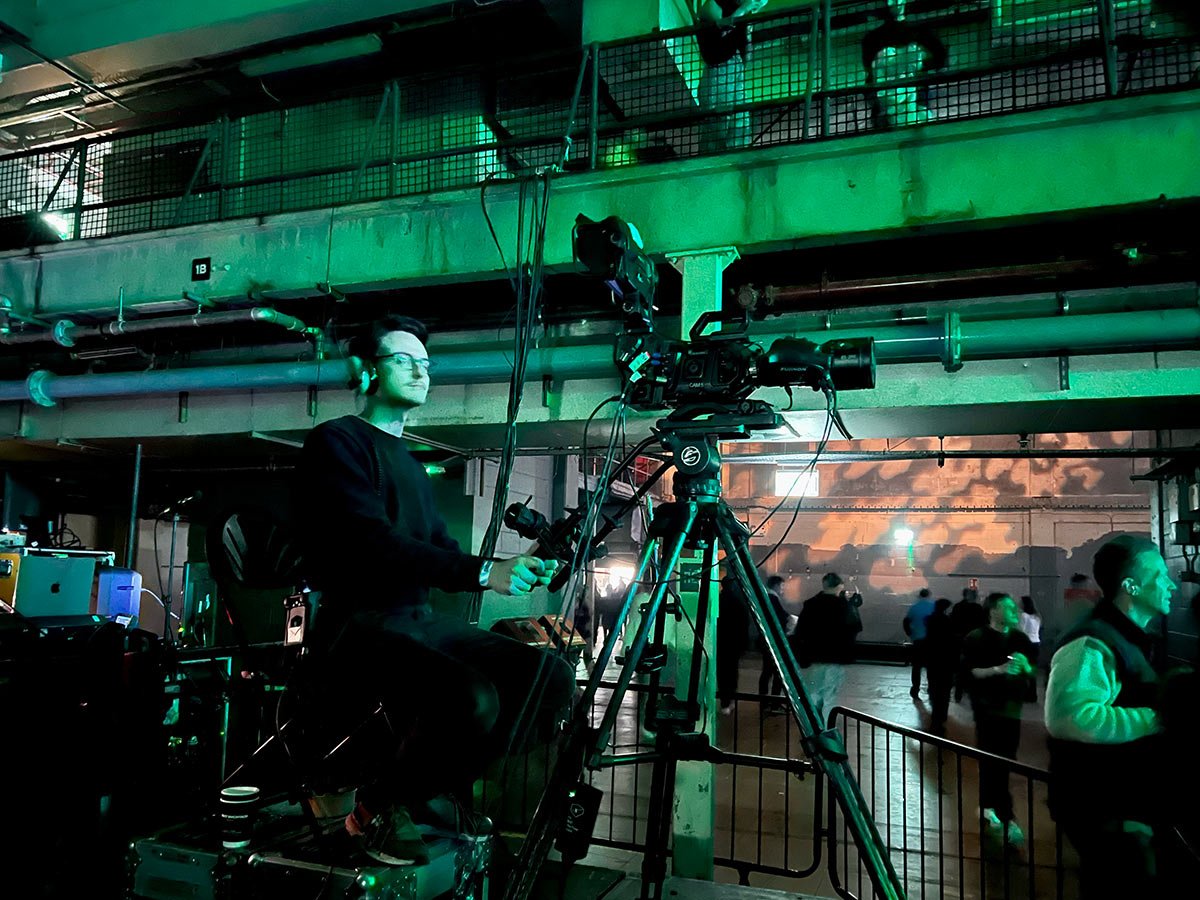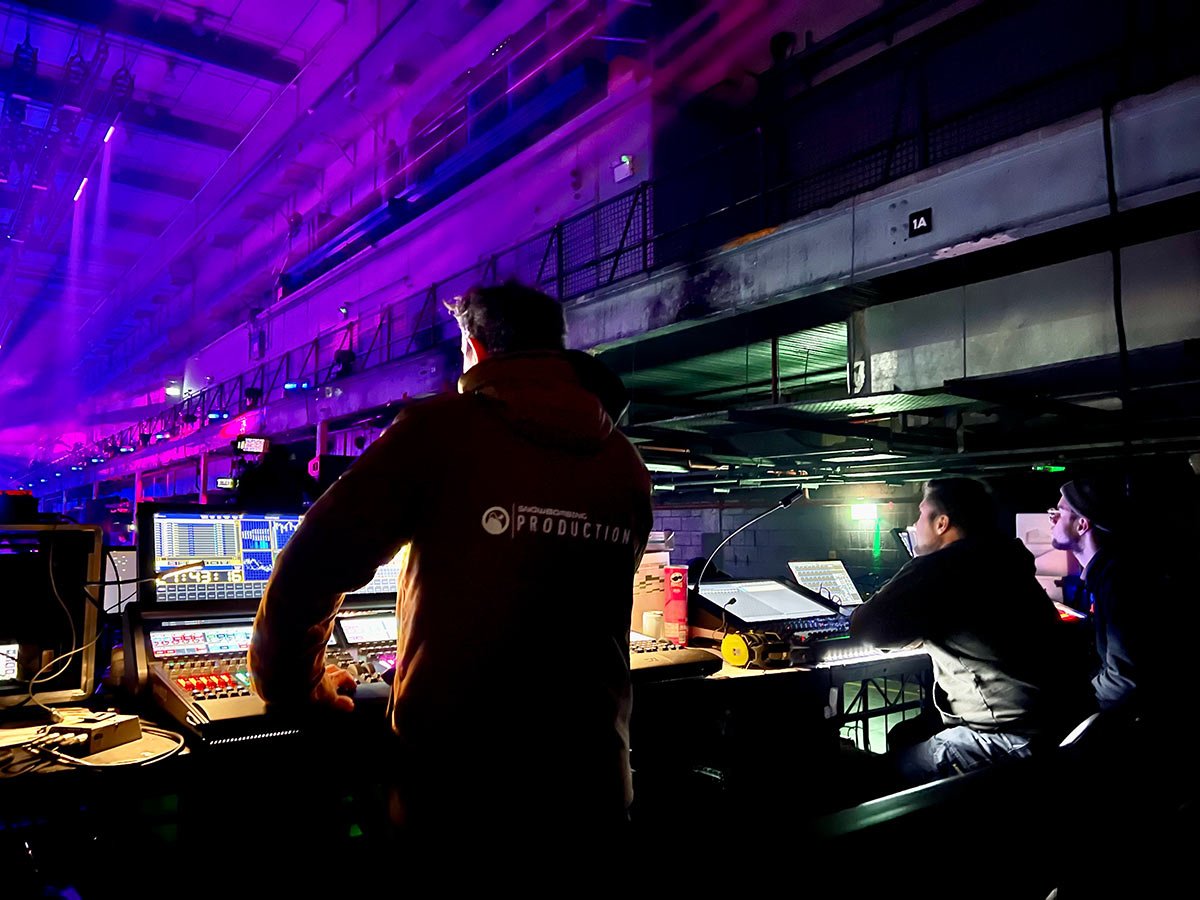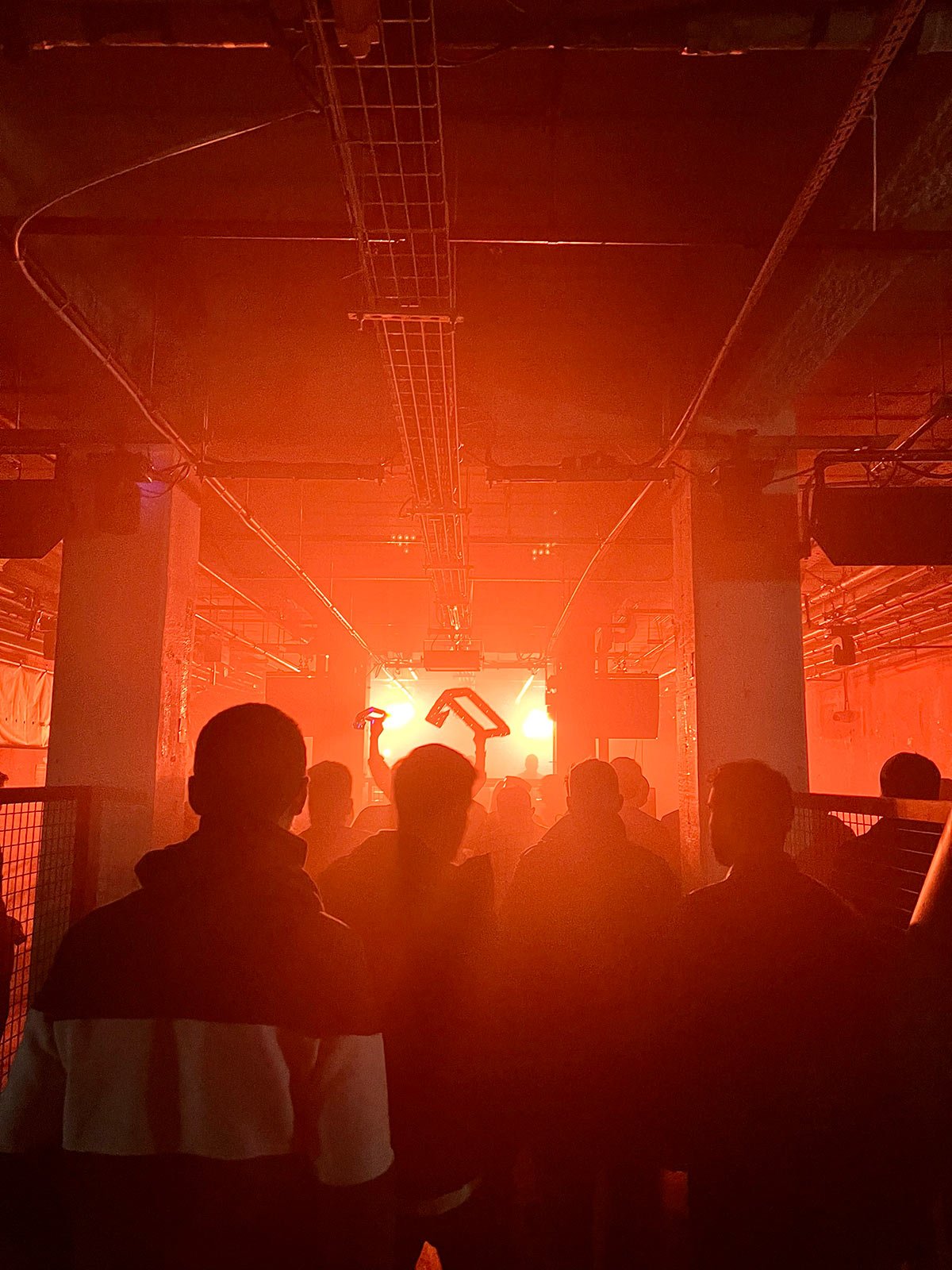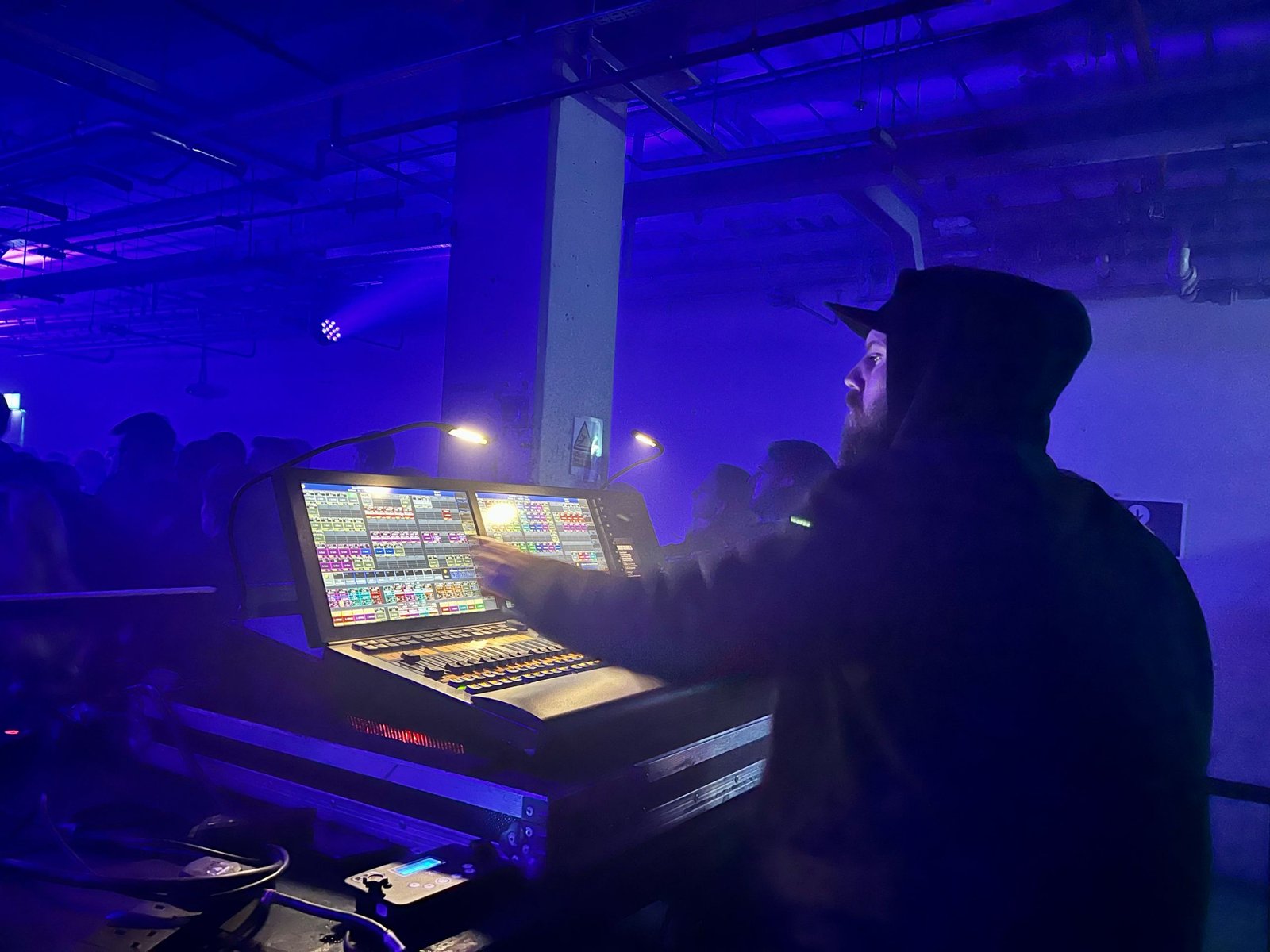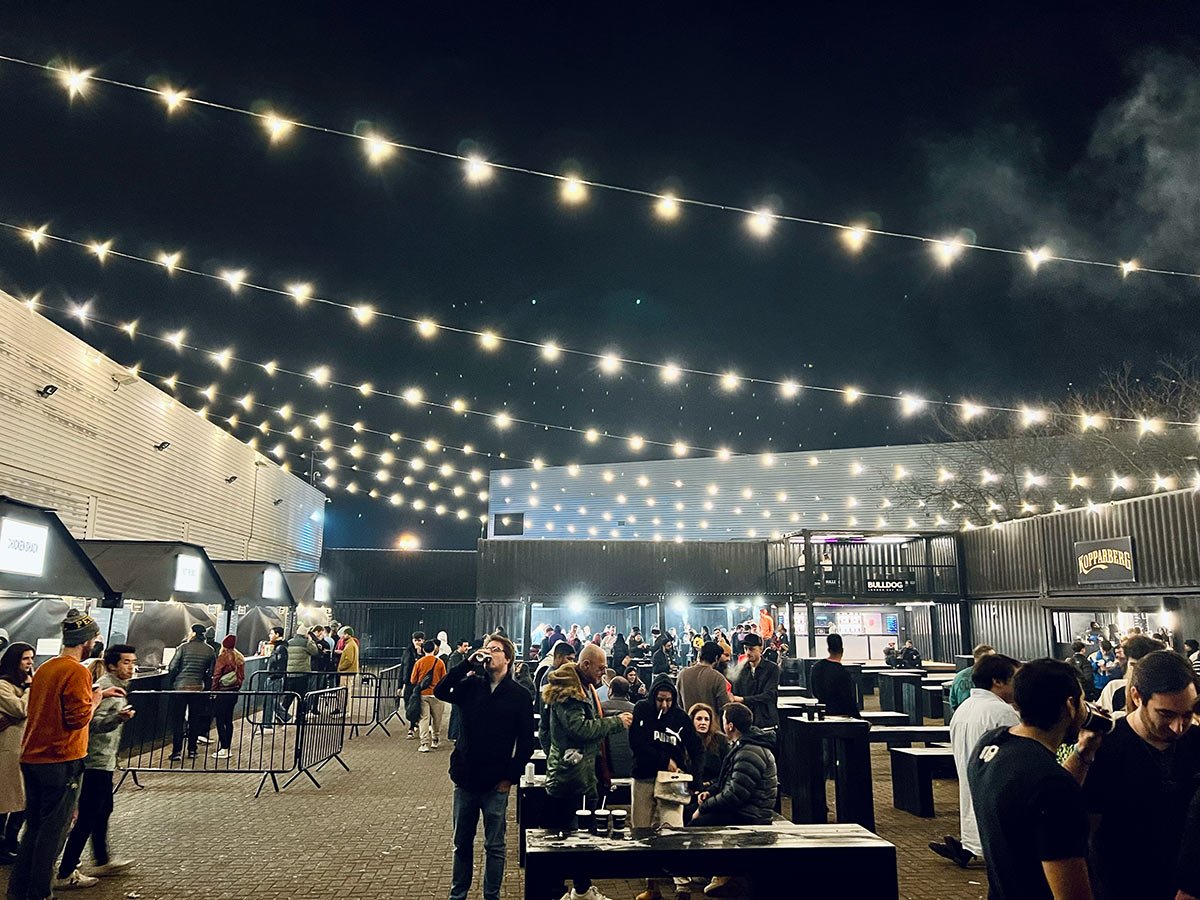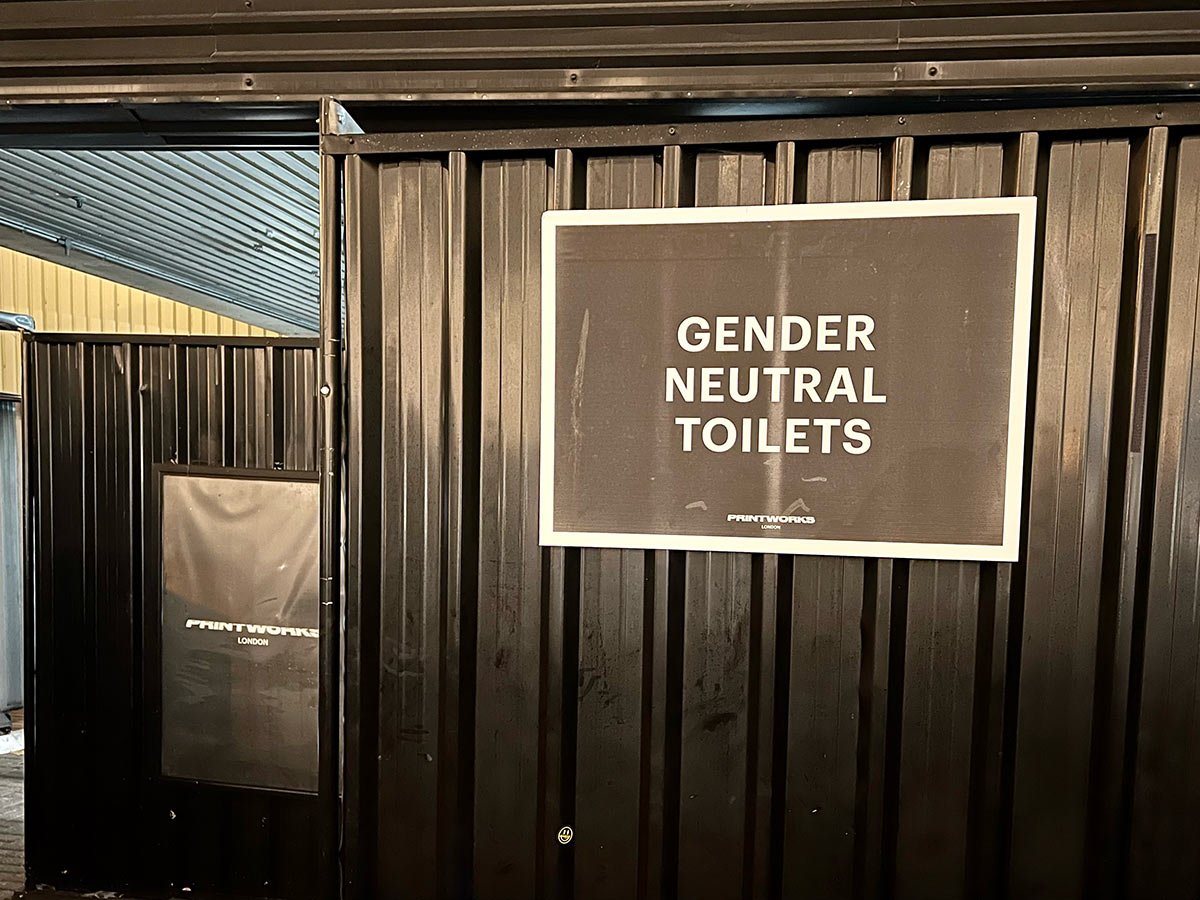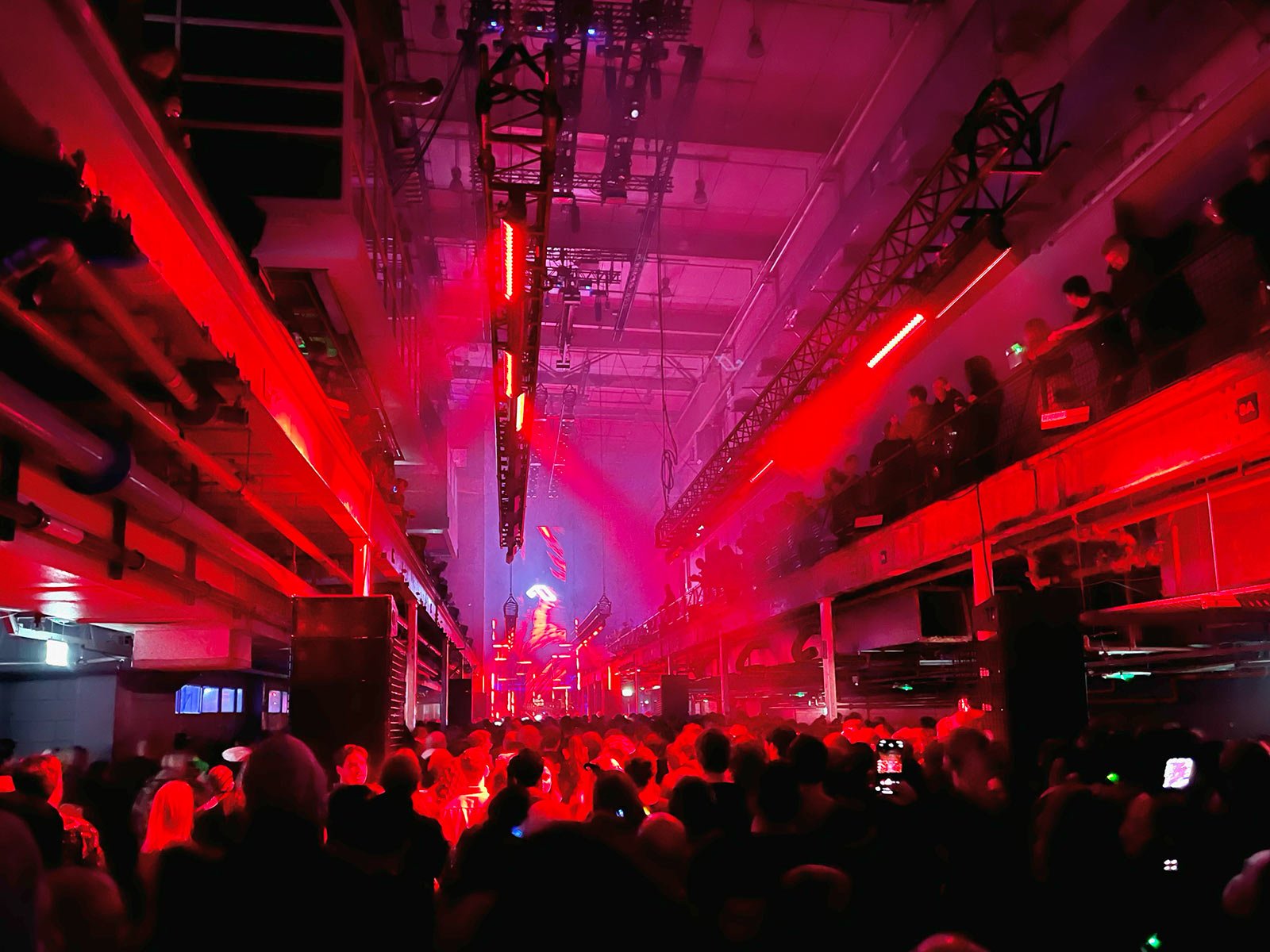How I got a Global Talent UK visa: a comprehensive guide and my experience
In March 2023, I acquired a Global Talent visa and relocated to the UK. Interestingly, this visa type isn’t widely known, so I’d like to shed light on it and share my personal experience. If you’ve been contemplating immigration, this article might offer valuable insights.
Added in July 2024: this guide now has a video version! I’d highly recommend watching the video first, and then reading the article and the comment section for additional details:
Overview
The Global Talent visa is designed for individuals within the realms of science, art, culture, and digital technology.
The visa grants permission for legal residency and work in the UK for up to five years, with the option to extend, apply for permanent residency, and later, citizenship. It also permits bringing along your partner and children.
Self-processing the visa can cost approximately £3000 per individual. I went through this process independently and will elaborate on the breakdown below.
Upon completion, you receive a Biometric Residence Permit (BRP) card. This internal document enables activities like opening a bank account or obtaining a tax identification number.
The process took me five months, from discovering this visa type to gathering documents and acquiring the BRP. I’ll outline a detailed timeline below.
Differences from a standard Work Visa
When considering a work permit in another country, the typical option that comes to mind is a work visa. In the UK, this is termed the Skilled Worker visa.
In theory, obtaining a Skilled Worker visa is easier because most of the bureaucracy rests on the employer. You can apply for a job from abroad, undergo an interview, and secure an invitation to work, along with your relocation to the UK.
However, there are nuances:
- Not every company or profession qualifies for this visa. The government website maintains a register of approved companies and a list of professions; if yours isn’t listed, you’re out of luck.
- Even if a company is on the approved register, they might not be interested in hiring a foreign worker like you. Various reasons exist for this, ranging from increased costs in hiring non-local specialists to internal restrictions. I encountered this scenario personally. Despite 12 years of experience and a stellar reputation with the company, I couldn’t secure a position in their UK office due to internal regulations. This situation led me to explore other options, and fortunately, I discovered the Global Talent visa.
- The Skilled Worker visa ties you to an employer. Switching jobs means leaving the UK and starting anew. If your company struggles and you’re laid off, you’re also required to leave. Overall, this visa provides limited or no social security, a major drawback for me as a family person.
- You must undergo an English test, provide income proof, and maintain a minimum amount of money in your account for the Skilled Worker visa.
In contrast, the Global Talent visa requires proof of your talent but offers extensive flexibility. You can opt to work or not, switch jobs without constraints, freelance, or establish your own business – all without the requirement to demonstrate proficiency in English or meet specific income criteria.
As far as I know, the Global Talent visa has only two restrictions: you cannot work as a doctor or a professional sportsman, and you cannot claim public funds, such as benefits or pensions. Apart from these limitations, you have the freedom to live and work as you prefer on this visa.
Preparation and categories
When you peruse the general descriptions and prerequisites for this visa, you’ll come across terms like “exceptional talent” and “acknowledged leader.” Somewhere in the mix, there’s a mention of “If you have Oscars or Grammy awards, click here.” Initially, it might seem a bit daunting. You might think, “Well, that’s a bit extreme! I don’t have any of that. Looks like this visa isn’t for me.”
The key to getting ready mentally is not to feel intimidated or misled. You don’t need to be a global star. Any level of success in your field might just be enough. From my experience, this visa isn’t primarily about inherent talent; it’s more about your willingness, determination, and your ability to meet the criteria.
From my experience, this visa isn’t primarily about inherent talent; it’s more about your willingness, determination, and your ability to meet the criteria
The Global Talent visa comes in two categories: Exceptional Promise (for those who show promise) and Exceptional Talent (for recognised leaders).
The key difference between these categories is that achieving indefinite leave to remain takes at least 5 years under Exceptional Promise, while Exceptional Talent requires only 3 years. Clearly, Exceptional Talent is the preferred choice.
The decision of which category to apply for is yours to make. However, it’s crucial to note that if you apply for Exceptional Talent and fall short of the recognised leader criteria, you may still qualify for Exceptional Promise. On the other hand, applying for Exceptional Promise might restrict your eligibility only to that category. So, my advice is to always opt for Exceptional Talent, even if you’re uncertain about meeting all the stringent requirements.
Stages and costs
The visa process globally comprises two primary stages referred to as Stage 1 and Stage 2 in official documentation.
Stage 1 involves obtaining approval from a cultural institution. Normally, immigration officials, who typically deal with formalities like border crossings, income, employment, and criminal records, might not possess the expertise to determine your talent in the cultural or scientific field. Therefore, they redirect you to the relevant organisations that are better equipped to assess your credentials.
The cultural institution you approach for approval depends on your area of work. This step, known as endorsement, is the most critical and often the most challenging.
The visa fee totals £623, divided into two components: £456 for the endorsement application and £167 for the visa application. For Stage 1, you’ll need to pay the initial £456 online from anywhere globally. Unfortunately, if your endorsement isn’t approved, the payment is non-refundable. You can reapply by paying the same amount again.
Stage 2 involves applying at the visa application centre once you secure the endorsement. This necessitates physically submitting the required documents to the specified address. If it’s your first time obtaining the visa rather than renewing an existing one, you must apply outside the UK. This phase is primarily a formality, and it’s almost certain that your visa will be granted.
According to regulations, you’re eligible to apply from any country where you have permission to stay for a minimum of 6 months. However, there are cases of successful applications from countries where legal residence is less than this duration. If this detail is crucial for you, I suggest delving deeper into this aspect. I haven’t encountered this situation personally as I applied from Israel.
During this phase, you’ll need to settle the remaining £167 for the visa and, notably, £624 for health insurance (Immigration Health Surcharge) per year per individual, which can be quite a hefty sum. For children under 18, the amount is slightly reduced to £470 annually. Additionally, there’s an additional £55 fee for the visa centre.
Total cost:
| Service | Promise (5 years) | Talent (3 years) |
| Visa | £623 | £623 |
| IHS | £3120 | £1872 |
| Fee | £55 | £55 |
| Total: | £3798 | £2550 |
You’re not obliged to apply for the full visa period in a single application. You have the flexibility to select a duration between 1 to 5 years. For instance, if the immediate payment for insurance is challenging, opting for a shorter term is feasible. Yet, it’s worth noting that extending the visa later will incur an additional £623 fee. Hence, making a one-time payment for the entire term is the most cost-effective option.
Here’s an overview of the process and its associated costs. Now, let’s delve into the specifics.
Choosing the field of work
Before diving into document collection, it’s crucial to decide on the specific field you’ll be applying under. As mentioned earlier, various endorsing organisations correspond to distinct fields, each with its unique application requisites and nuances.
Here are the available options:
| Academia or research | Science; medicine; engineering; humanities |
| Arts and culture | Combined arts, dance, literature, music, theatre or visual arts; architecture; fashion design; film and television |
| Digital technology | Financial technology; gaming; cyber security; artificial intelligence |
I applied under the following category: Arts and Culture → Combined Arts, Dance, Literature, Music, Theatre, or Visual Arts → Music → Performing DJ, Music Producer, Curator, Events Promoter.
The endorsing body for my field is Arts Council England. It’s important to note that all my experiences pertain specifically to this organisation, considering my application falls under this category. If you’re applying in another field, ensure you thoroughly research their individual requirements.
A full list of requirements as well as the specific disciplines in which to apply in arts and culture is available in the official guide from Arts Council England. Be sure to download and study this document carefully.
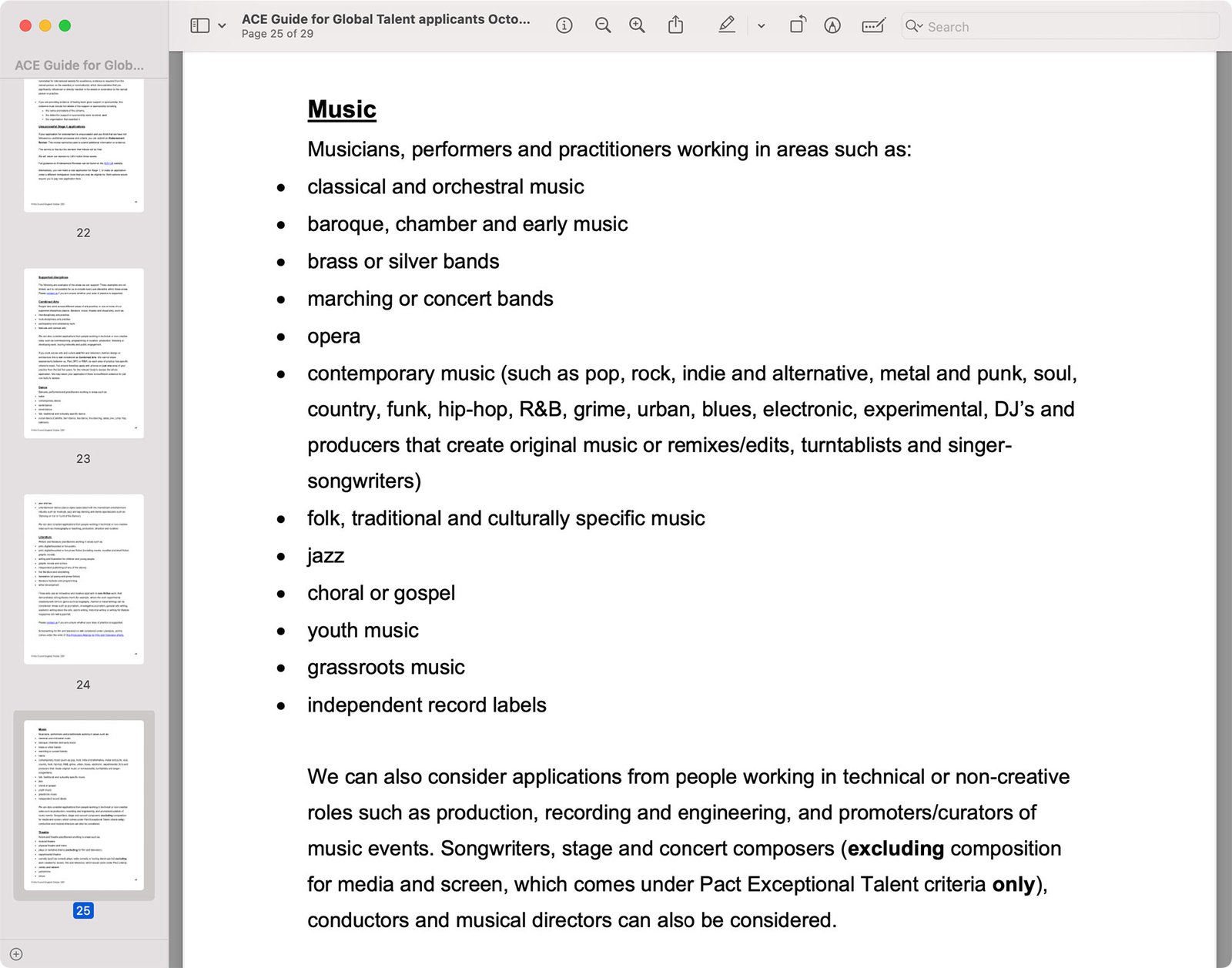
Stage 1: Endorsement
To apply for endorsement, you need to provide 13 documents :
3 letters of support from organisations with international professional recognition with whom you have previously worked.
The letters should describe how you met, the things you have done together, your achievements and how they think you can enrich the cultural life of the UK. The latter is particularly important: not what the UK is good for you, but what you can do for it. It is very important here to outline what specific plans you have for the country in the short term.
The first letter must be from a UK organisation. The second letter can be from any international organisation. The third letter can be from either an organisation or an individual who is also a well-respected expert in your field.
Each letter should contain the company’s logo, full legal address, date, signature, and a brief company profile or author’s biography to ensure clear identification. Only senior executives may sign these letters.
Pro Tip: Provide a draft when requesting recommendations, making it easier for them to adjust details and sign off, significantly enhancing your chances of securing it.
10 supporting evidence of your professional activities. These should fall into at least two of the following categories:
- Media recognition: independent reviews, critiques, or evaluations of your work via articles on websites or magazines. While interviews are acceptable, they are less desirable.
- International awards: any awards or nominations that highlight your work’s quality.
- Proof of appearance: any professional activities relevant to your application.
There should be at least two media coverage. Other than that, it is up to you to decide on the proportion of these documents, as long as they do not exceed ten in total. For example, you could have three media recognitions, five awards and two appearances. Or whatever else you like.
Each document should focus on one event or article and not exceed two A4 pages. Roughly speaking, you cannot name a document “All my performances abroad” and fit all your tours into it.
Two important points to note:
- All evidence must be no more than five years old. Showing an award you received six years ago, unfortunately, is not possible.
- You can’t use blogs or social media. If the poster of your most important performance is only posted on Facebook, it won’t count as evidence, sadly. Only websites or magazines.
Be prepared for those handling endorsements to Google your name. Ensure that your online presence displays relevant and reputable content. This holds true for the companies providing recommendation letters.
There are no special rules about the layout of the documents – do as you like. There is only one requirement, though: if you show a screenshot of the website as evidence, save the page through the print version so that the date and the link to the source are automatically inserted in the footers.
I can show you one of my evidence as an example, as there’s no confidentiality concern:
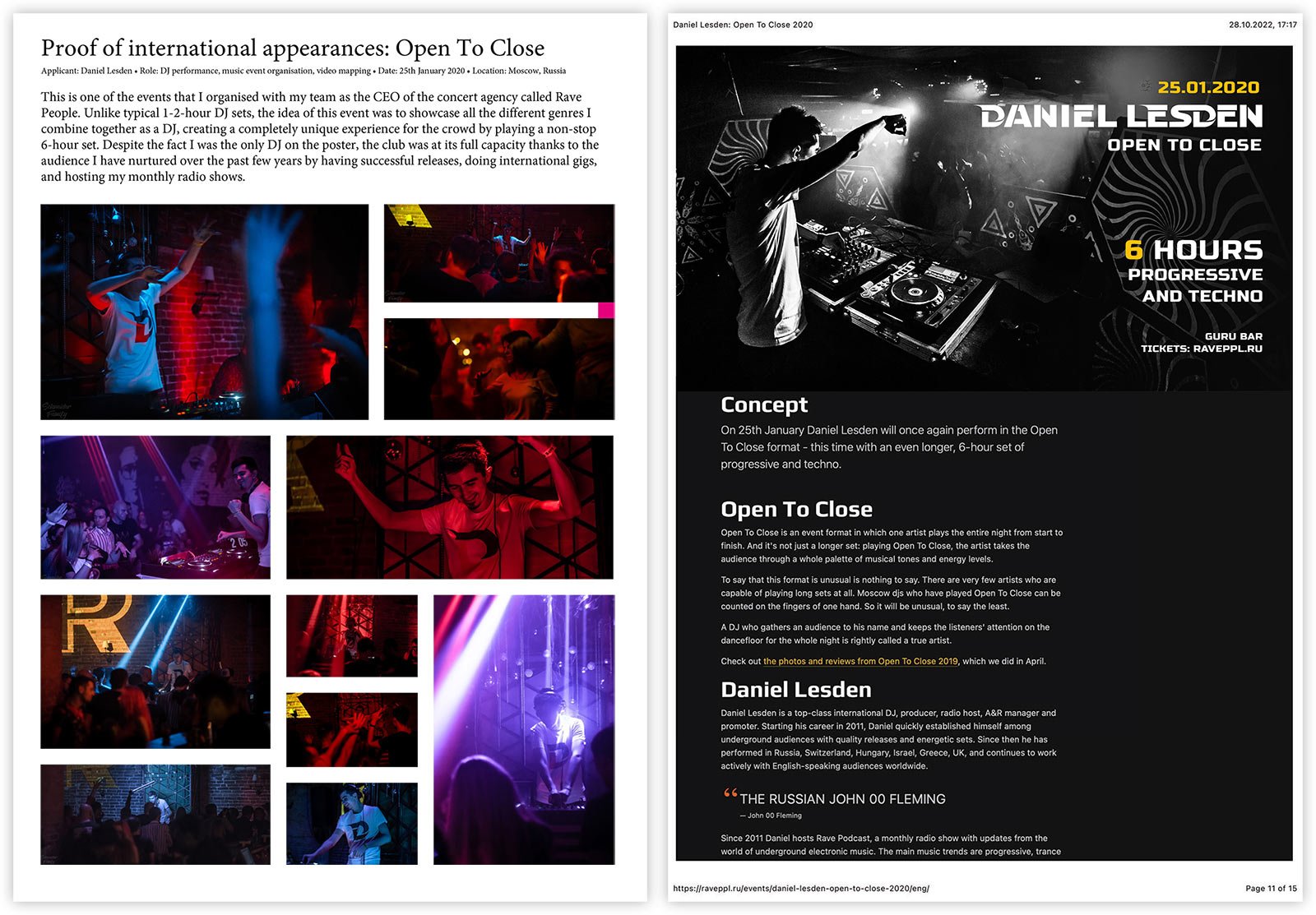
Please note, the document showcases my stage name, Daniel Lesden, rather than my real name. This is fine: during the application, you can present various versions of your first name (including transliteration, maiden name, etc.) alongside your stage name.
You might wonder, ‘What if I lack an award, media mention, or any other necessary document?’ This, indeed, constitutes the primary challenge of the visa! Remember the emphasis on determination I highlighted earlier? Write, search, network, inquire. There’s no one-size-fits-all solution, but I firmly believe that any hurdle can be overcome.
Once all the documents are gathered, you can proceed to apply for endorsement through the Global Talent Endorsement page. You’ll be required to complete a comprehensive application form and pay the initial portion of the visa fee. Once you’ve gone through these steps, you’ll receive a crucial precious address to which you must submit all the documents. Attachments should not exceed a total size of 25 MB.
Here’s the composition of the final list of 13 documents I submitted to Arts Council England:
- Evidence 1. Media recognition
- Evidence 2. Media recognition
- Evidence 3. Media recognition
- Evidence 4. International award
- Evidence 5. Proof of appearances
- Evidence 6. Proof of appearances
- Evidence 7. Proof of appearances
- Evidence 8. Proof of appearances
- Evidence 9. Proof of appearances
- Evidence 10. Proof of appearances
- Letter 1 (UK)
- Letter 2 (USA)
- Letter 3 (UK)
The entire process of understanding the requirements and gathering documents took me a little over a month. I imagine this timeline can differ significantly for each individual: the more tangible accomplishments you have, the smoother the document preparation, and conversely.
After dispatching the documents, all that remains is to wait. Speaking from experience, it’s quite an emotionally charged period.
I got a decision after three weeks:
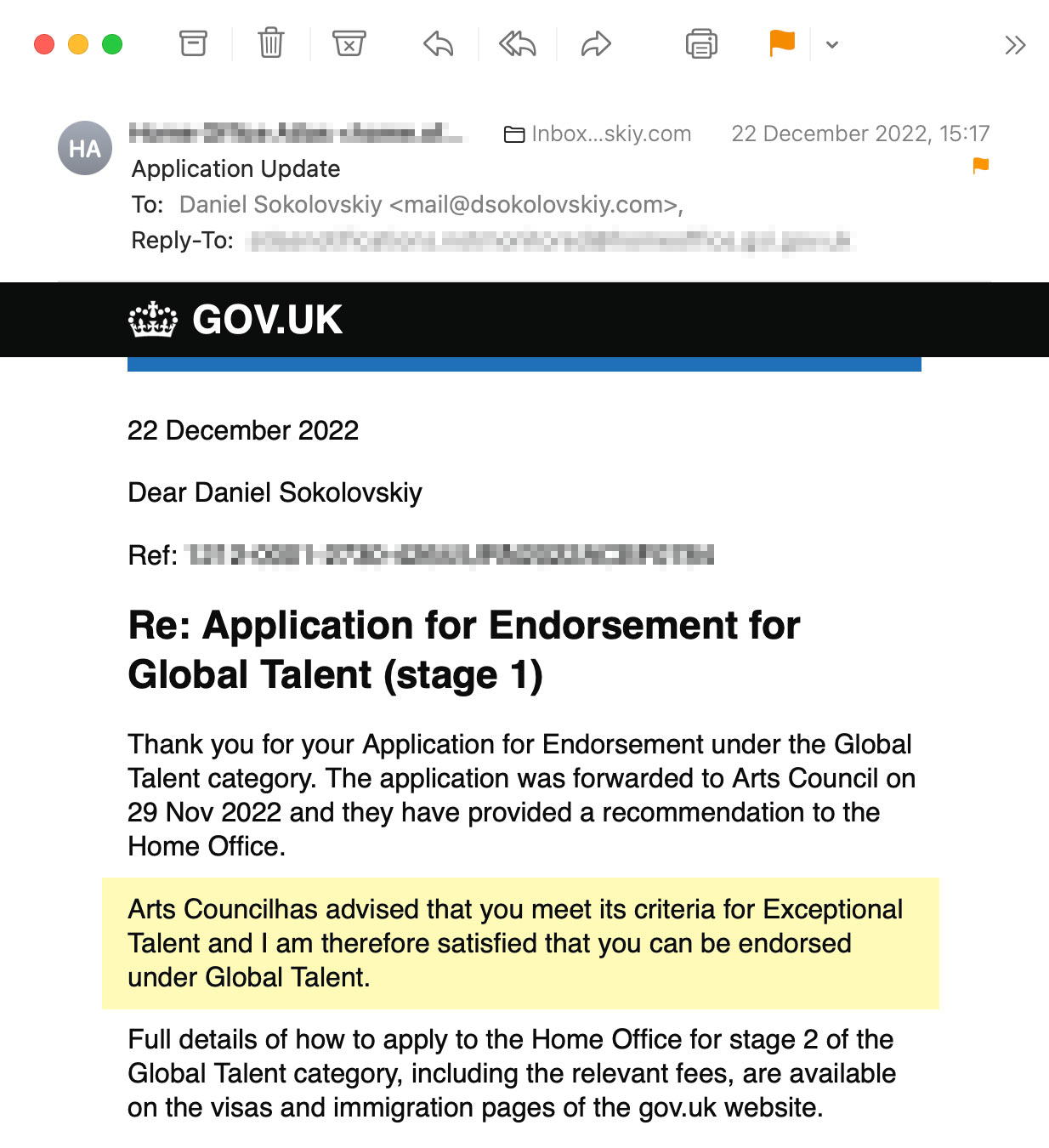
From this point, the clock starts ticking: the endorsement remains valid for 3 months. If you don’t proceed with the second stage within this timeframe, the endorsement will expire, requiring you to begin the process again.
Step 2: visa application centre
If you were in the UK as a tourist during your stage 1 application, as I was while in London, you’ll need to depart the country. The second stage must be applied from outside the UK.
During this stage, you aim to secure an appointment at the visa application centre. At the appointed time, you’ll submit your documents there. Similar to the prior step, you’ll need to complete an extensive application form and make the insurance payment at the end.
Following the payment, you’ll have the chance to schedule an appointment on the visa application centre’s website. At this point, there are two entry methods: self-service and assisted service. The distinction lies in self-service, where you independently upload your documents online, while assisted service involves bringing copies of your documents to the visa centre for scanning and online uploading. I opted for the first option as it appeared more convenient for me.
Here are the documents I uploaded online:
- Scans of all the passports I listed on the application form
- Endorsement email
It’s important to note that, in addition to these documents, a tuberculosis certificate is required, and this can be a bit tricky. The test is mandatory for those who have in these countries resided in specific countries within the last six months, including Russia but excluding Israel. The test must be conducted at UK-approved certified clinics. When I scheduled my appointment at the visa centre, there were no such clinics in Israel, as residents there aren’t typically required to undergo this test. This presented a challenge as I couldn’t physically take the test there.
I must highlight that this was a point of contention; they were not pleased with this situation, and I was instructed to send them the certificate anyway. Interestingly, around the same time, the UK website suddenly listed Israel as one of the certified clinics! Regardless, I eventually managed to obtain the required test, and fortunately, everything was alright. Nevertheless, it was a stressful experience, so I strongly advise taking care of the certificate beforehand, ensuring it’s completed wherever it’s feasible.
After your appointment, you’ll receive a checklist outlining the required documents for your appointment. However, there might be a section that might initially give you a scare:
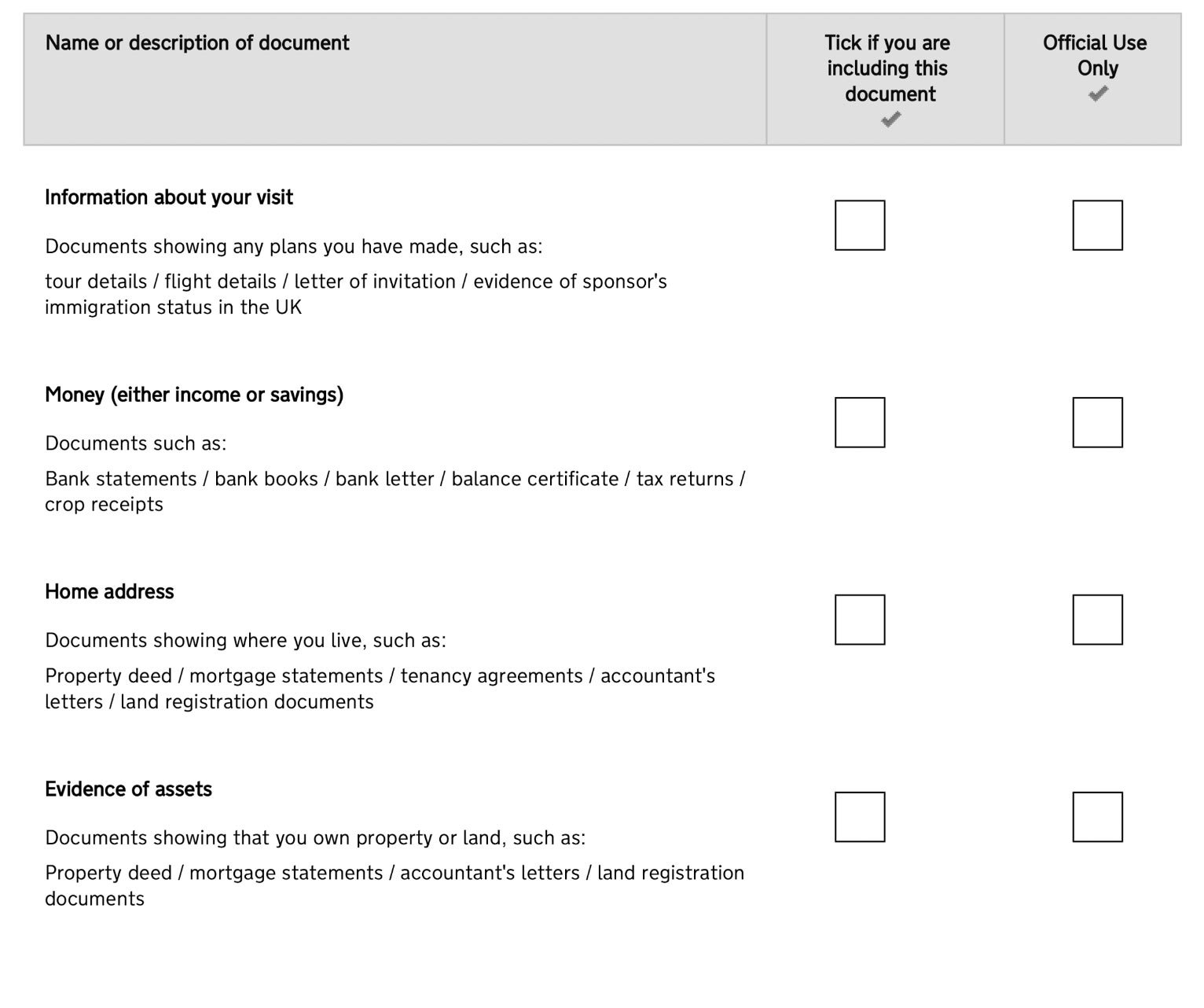
“Visit information, savings, real estate”.... er, what? Aparentely, this is a part of a general checklist applicable to various visa types, including regular tourist visas, and doesn’t pertain to the specifics of the Global Talent visa. Phew!
In the end, I only needed the first sheet of the printed application form and my passport at the reception at the visa centre.
Bear in mind that your passport will be taken from you while you wait for your visa, which can take up to 8 weeks. If you want to keep your passport with you, you can use the Keep My Passport service for a fee. This service costs an additional £55 and is only available online, before your visit. This service is not available at some visa centres.
Then the procedure is the following: your passport is sent to the Decision Making Centre, a vignette is stamped in it, then they return your passport, and then you can fly to the UK with it.
Exactly 15 days after the visit, I received this email from the Decision Centre:
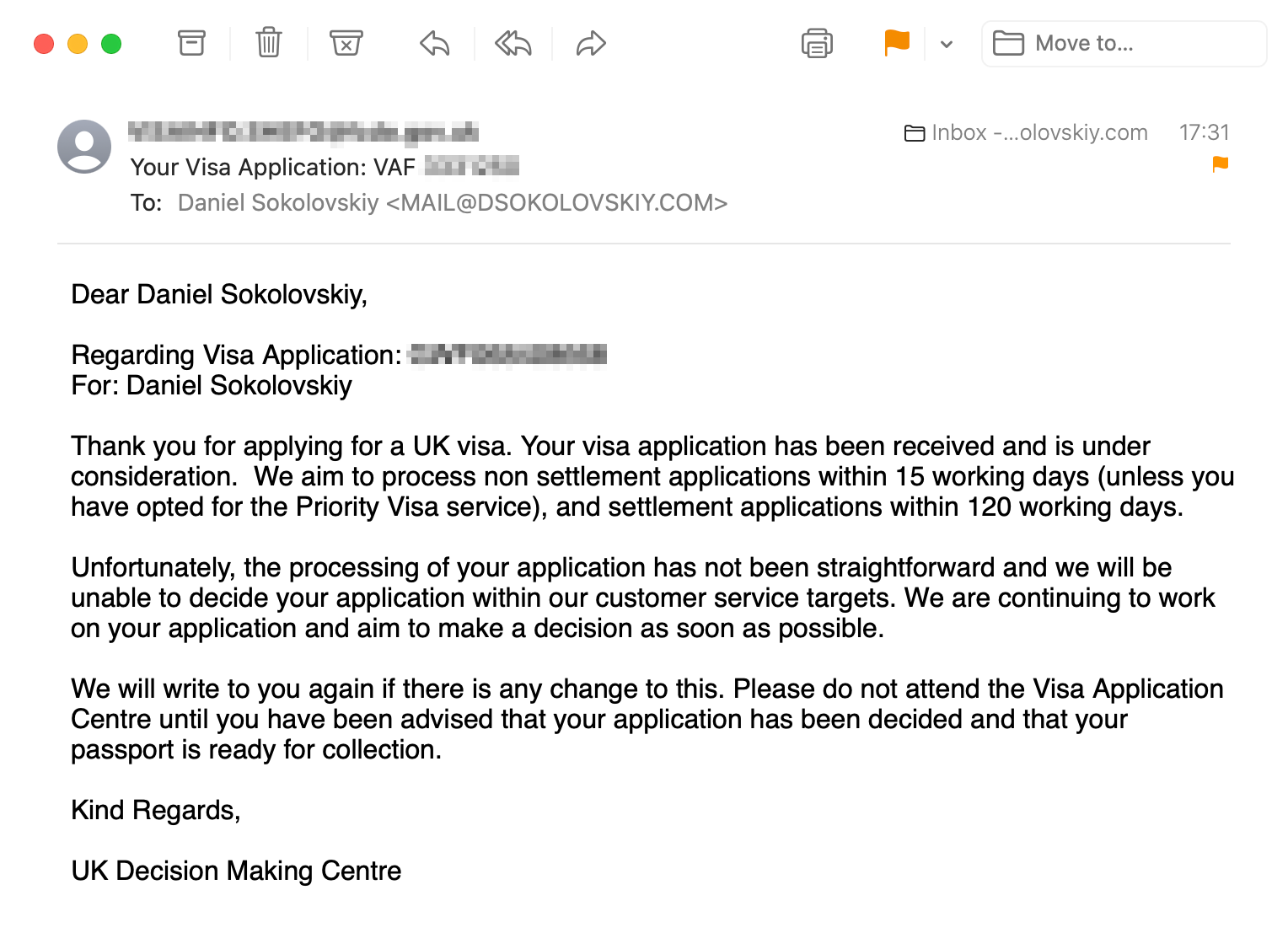
This email might appear alarming, particularly with phrases like “unfortunately” and “120 working days.” However, it’s a standard automated email expressing regret for not meeting the ideal 15-day processing time. So, if you receive this email, don’t panic – it’s a routine message.
My passport was returned after 8 weeks and 5 days, delivered by a DHL courier.
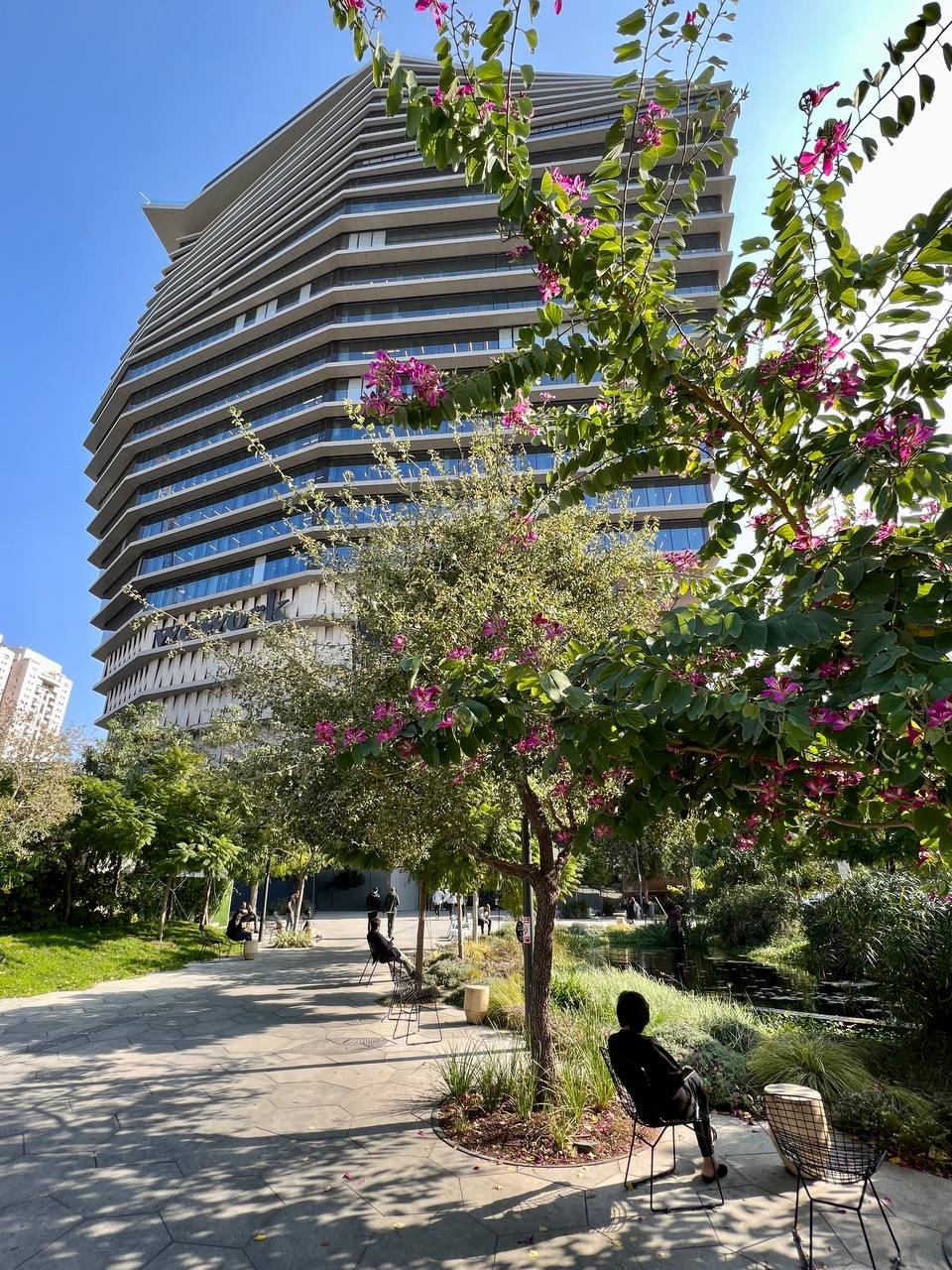
By now, your Biometric Residence Permit (BRP) should be awaiting collection at the designated post office in the UK, as indicated on your application form.
This marks the start of your life as a resident in the UK, with new challenges like finding a place to stay and setting up a bank account ahead of you. It’s a whole new adventure!
Timeline
Here’s the final timeline in my case:
| 13 Oct 2022 | First heard about Global Talent visa |
| 28 Oct 2022 | Applied for endorsement |
| 22 Dec 2022 | Received the endorsement |
| 23 Dec 2022 | Applied for the visa |
| 3 Jan 2023 | Went to the visa centre |
| 23 Feb 2023 | Got an email that I must send a TB certificate |
| 27 Feb 2023 | Sent the TB certificate |
| 1 Mar 2023 | Got an email my passport had been dispatched for delivery |
| 5 Mar 2023 | Received passport with visa stamped on it |
Family
As previously mentioned, the Global Talent visa also allows you to bring your partner and children:
- Spouse or civil partner
- Unmarried partner
- Children under 18
They hold a special status as ‘dependants,’ meaning they rely on and are linked to your visa. If you choose not to renew your visa or leave the UK, they must also depart. However, they are permitted to legally live and work throughout the visa’s duration, similar to the main talent visa holder.
Dependants do not require endorsement, yet they are responsible for the full visa and insurance costs—matching the main talent visa expenses: £623 for the visa and £624 per year for insurance. For children under 18, insurance costs slightly less at £470 annually.
Interestingly, dependants can apply without waiting for the main talent visa’s approval. Although it may seem illogical, there’s no explicit rule preventing dependant applications before the main visa decision is made.
Indefinite leave to remain
The visa marks the start of the journey, not the destination. I’ve delved into what comes next, but it’s all theoretical, so it’s best taken with a pinch of salt.
After spending a few years on your visa, you might qualify to apply for permanent residence, known as Indefinite Leave to Remain (ILR). ILR allows you to live in the UK without time restrictions and access social security benefits.
gov.uk/indefinite-leave-to-remain
For Exceptional Promise category holders, the minimum qualifying time for ILR is five years, while for Exceptional Talent, it’s three years. However, this differs for dependants. They can only apply for ILR after five years, even if the main talent qualifies for Exceptional Talent and could apply after three years.
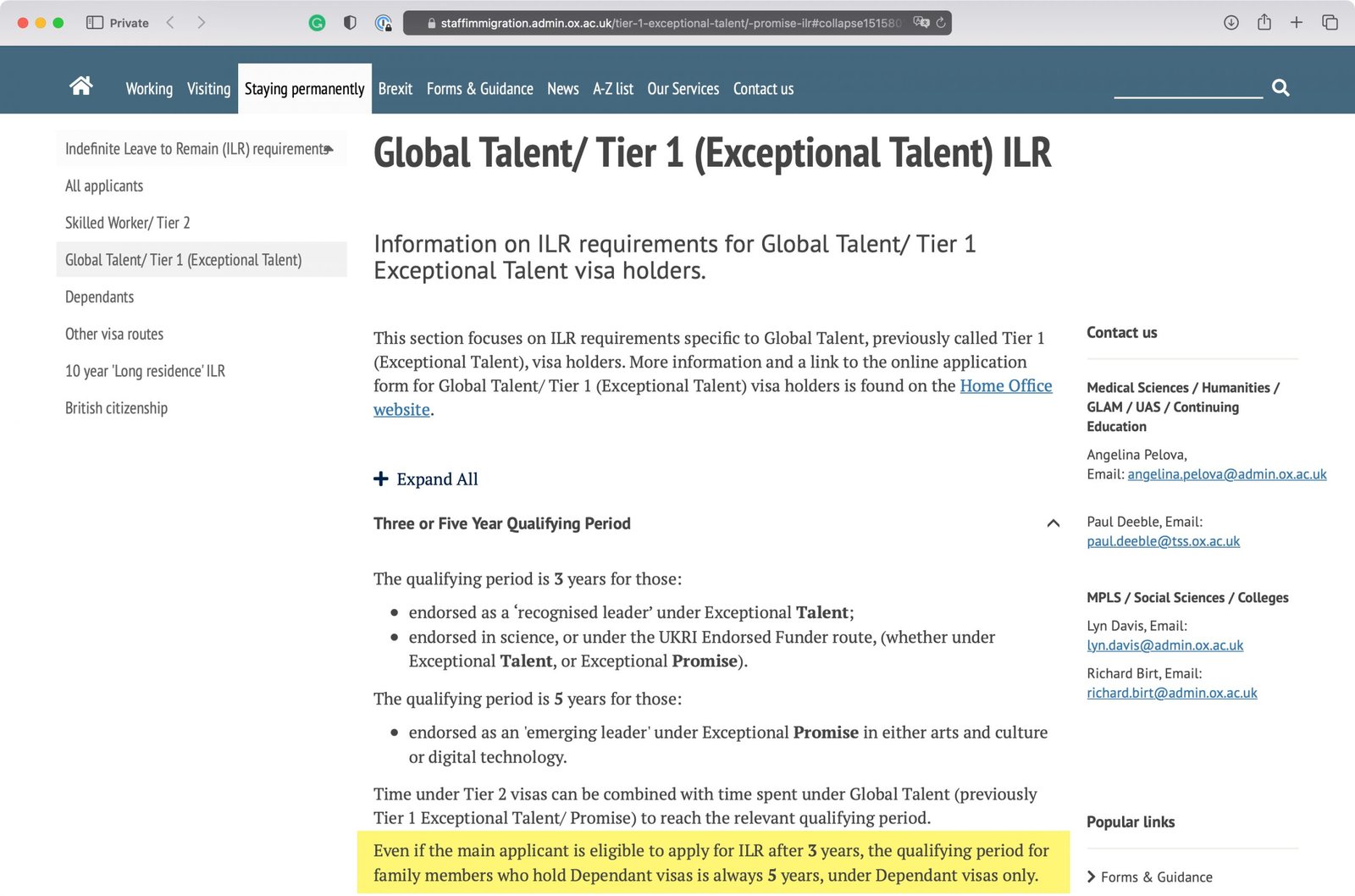
This rule seemed puzzling to me and doesn’t quite add up. In essence, it means that regardless of the Global Talent visa category, your dependents will end up paying for the full five years of insurance.
To secure ILR, it’s necessary to demonstrate income derived from the professional field related to your visa. I’m still in the process of figuring out the exact income requirements, but it seems employment documents, receipts, and three months’ worth of bank statements are considered suitable evidence.
Additionally, meeting the ILR criteria involves spending no more than 180 days outside the country per year and passing language and UK life tests.
Unlike the visa, a permanent residence permit doesn’t have an expiration, but staying outside the UK for over two years can lead to its revocation.
The application cost for ILR stands at £2404.
Citizenship
The final milestone of this journey is citizenship. Eligibility for citizenship comes after residing in the UK for five years, including at least one year with ILR. It’s important to note that the actual time spent in the country matters, excluding time spent abroad.
gov.uk/apply-citizenship-indefinite-leave-to-remain
Upon completion, you’ll receive a blue passport adorned with the royal crest. This passport functions as both an internal BRP replacement document and an external travel document for international trips.
The UK allows dual citizenship, but the rules concerning three citizenships and any potential implications remain unclear to me.
Applying for citizenship costs £1330 for adults and £1012 for children. Additionally, if a child is born in the UK while both parents already hold indefinite leave to remain, they automatically gain citizenship.
⌘⌘⌘
I hope this post helps anyone going through the Global Talent application process. Thanks for giving it a read!
If you’ve got any questions while dealing with your Global Talent application, just drop them in the comments. I’ll try my best to help out.
I also want to express my heartfelt gratitude to everyone who supported me during this challenging period – it was undeniably the toughest time in my life, and your support meant everything.
Have you found this article useful? ❤️
If you’ve found this article helpful for your Global Talent journey, you can buy me a cup of coffee here → buymeacoffee.com/danielsokolovskiy. I share everything for free, so your support really means a lot 🙏
⌘⌘⌘
Please note: I’ve been receiving numerous emails with questions, but I want to clarify that I’m neither a lawyer nor an expert on this visa. This article shares my personal experience in obtaining it, so I can’t predict the success of your case. Unfortunately, I can’t share any other documents beyond what’s discussed in this article. If you have questions, please post them in the comments below, where others might also contribute helpful answers.
Best of luck!
